My wife and I transformed the (rather) small yard in front of our house into a flower garden. It is full of roses, lavender, tulips, dahlias, and shrubs. The open areas are covered in bark chips to keep down the weeds.
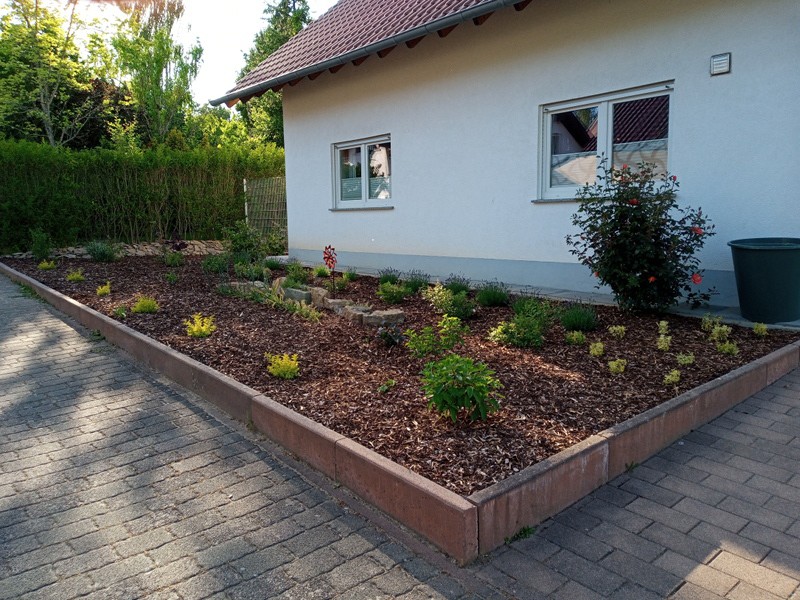
To make sure that the flowers stay properly watered, I put some Bluetooth capable sensors out in critical spots in the yard.
To my surprise, it turned out that I hardly need to water things at all - or do I? Some times the moisture is at the low end of the suggested range, and stays there for hours. Is that bad? Did it maybe drop below the recommended levels at some times and places? I don't know, but I want to find out for sure.
The sensors in the critical spots seem to show that there's always enough water in the soil under the 4 inches of bark that I didn't need to water things at all.
The soil moisture varies over the course of the day. The soil dries out somewhat during the day and recovers during the night.
During the driest part of the day, the sensors showed that the flowers still had enough moisture available - if the charts provided by the sensor manufacturer can be trusted and if the measured spots truly represent the state of the whole garden.
The handful of sensors I used couldn't give me a very detailed picture of the situation. I tracked things as well as I could with the original software from the sensor manufacturer, and cursed it every day.
The software is only intended to track the moisture and nutrients for single plants - it cannot combine data from multiple sensors.
Even for a single sensor, it has painful limits. You can't display the last 30 days so that you can track things easily. Nope. It only shows you the last month - on the first of the month you have an empty chart.
I started planning a better system with my own software.
The current idea is to space sensors on a 1 meter grid through the front yard (and selected spots in the backyard) to provide a comprehensive picture of just what the water in the dirt is doing.
The sensors will monitored by several solar powered ESP32 modules which will transmit the collected sensor data via WiFi and MQTT to a Django program on a Raspberry Pi.
I want to generate an animated "heat map" style chart of the soil moisture to see how it develops over the entire spring and summer, and I want to use the daily charts to tell when (or if) I need to water things.
 Joseph Eoff
Joseph Eoff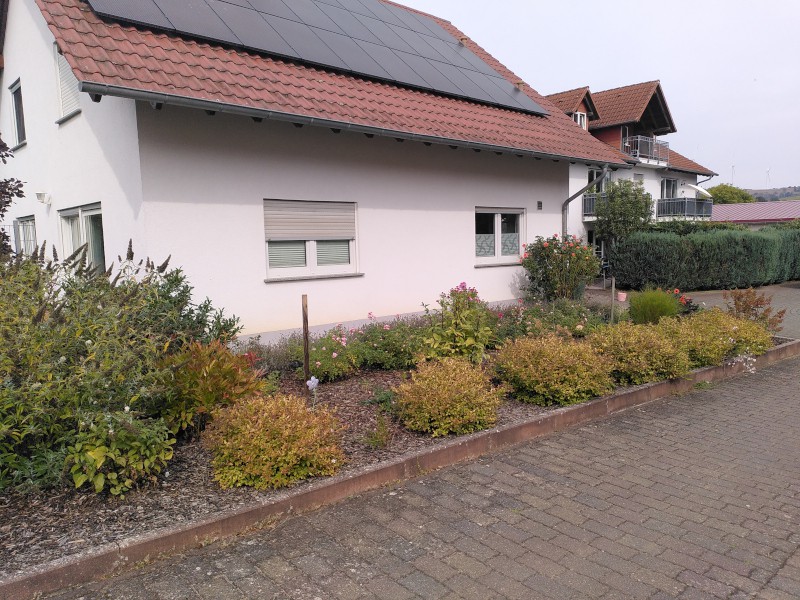
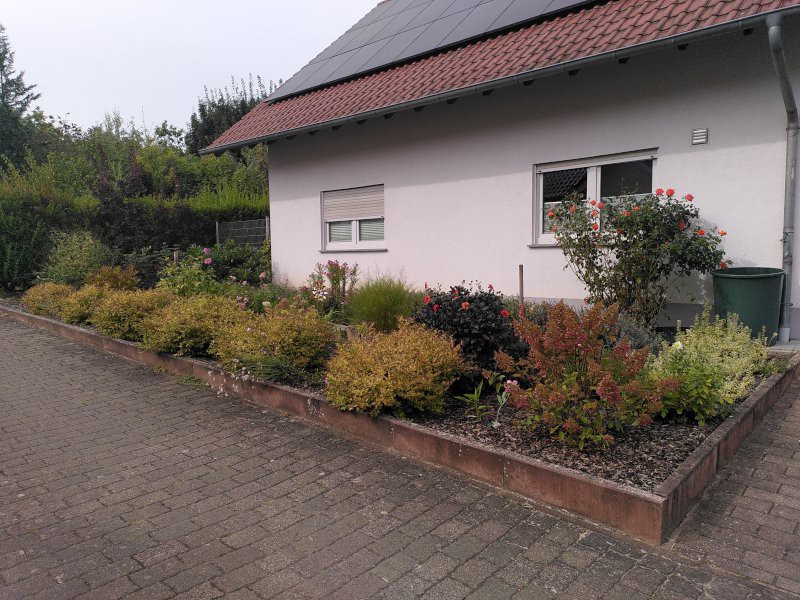
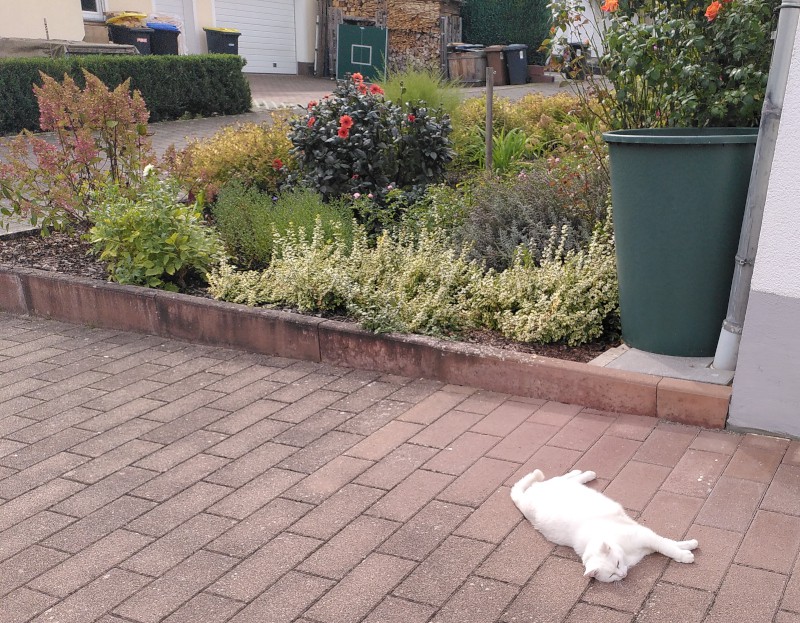
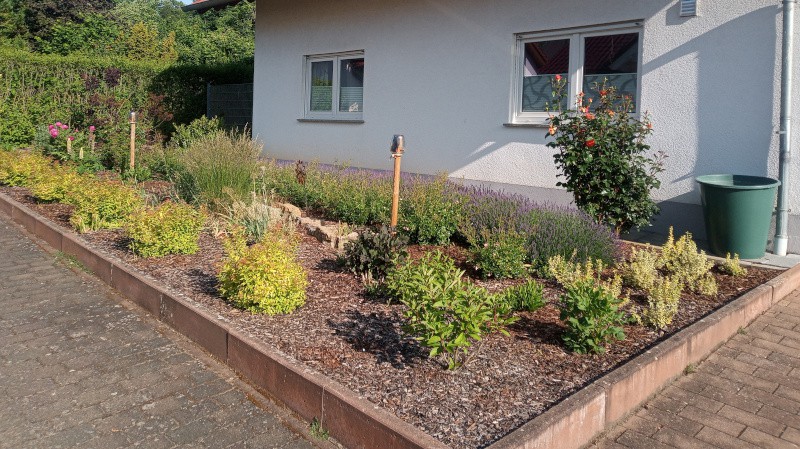
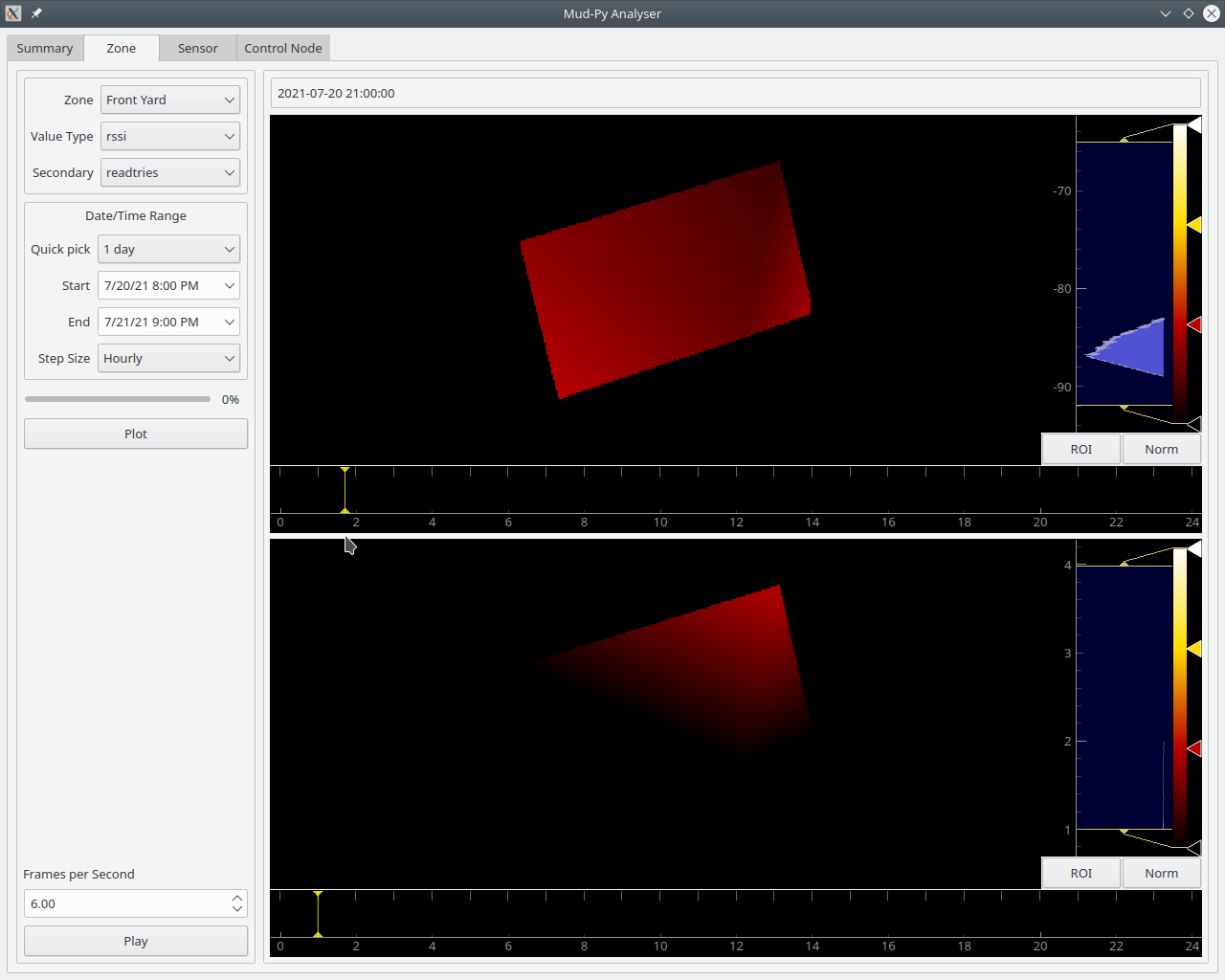 The upper plot is the RSSI, the lower plot is the read-try pseudo-sensor.
The upper plot is the RSSI, the lower plot is the read-try pseudo-sensor.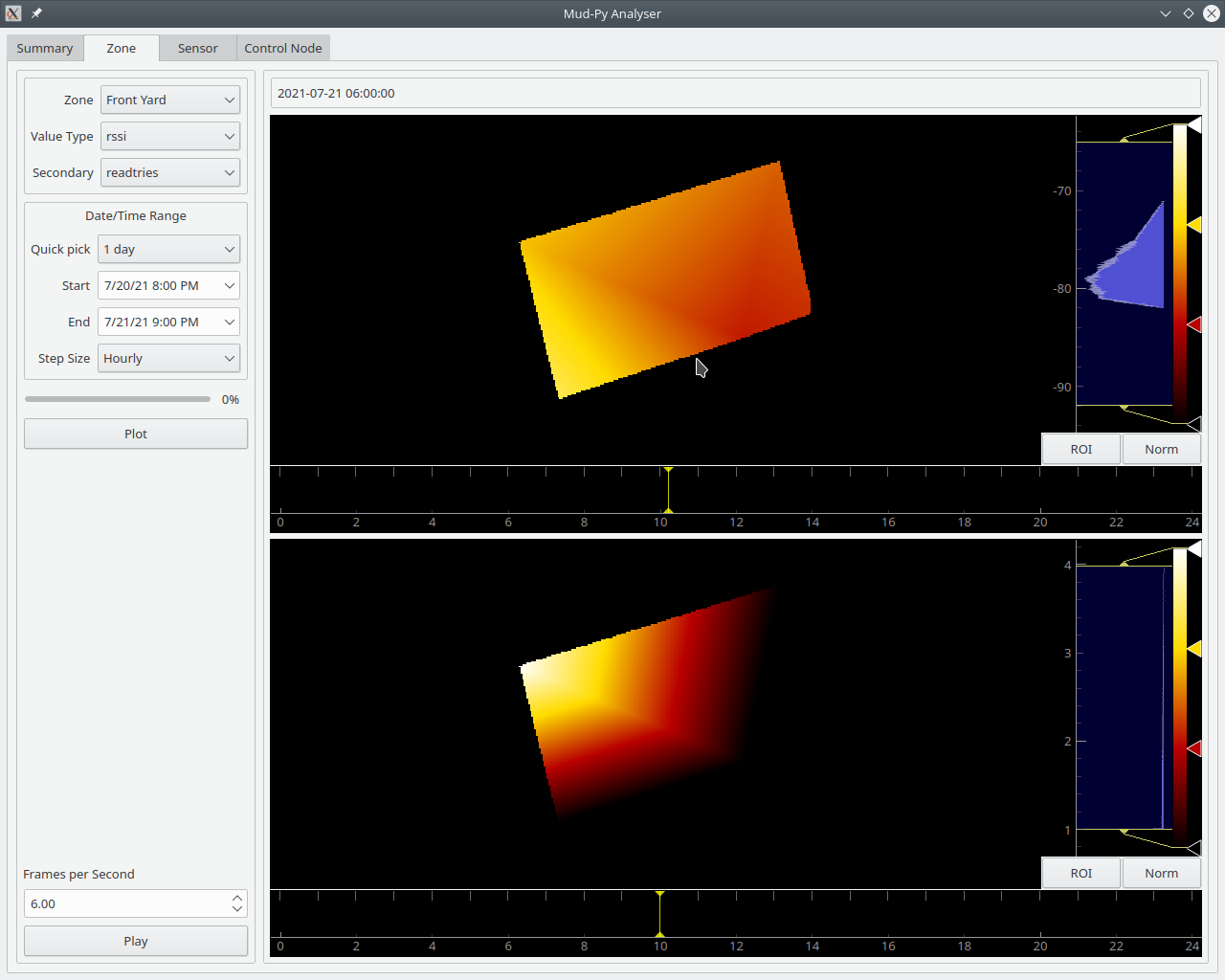 That's the same layout as above, but from about 6 o'clock this morning.
That's the same layout as above, but from about 6 o'clock this morning. 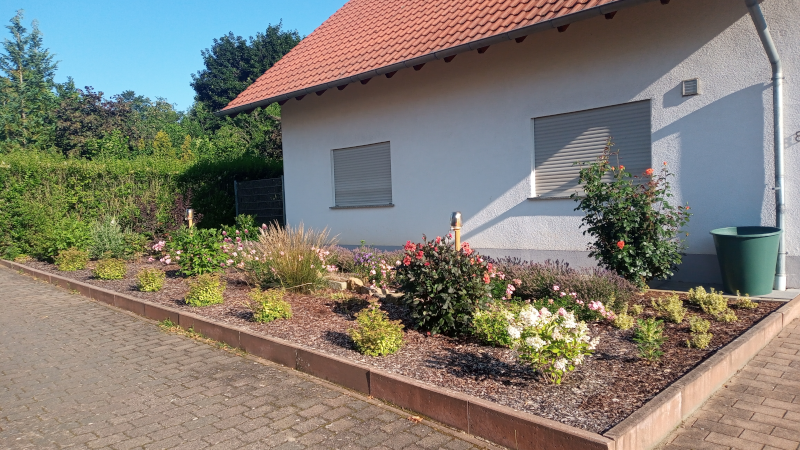 The tulips are long gone and the lavender is starting to fade.
The tulips are long gone and the lavender is starting to fade.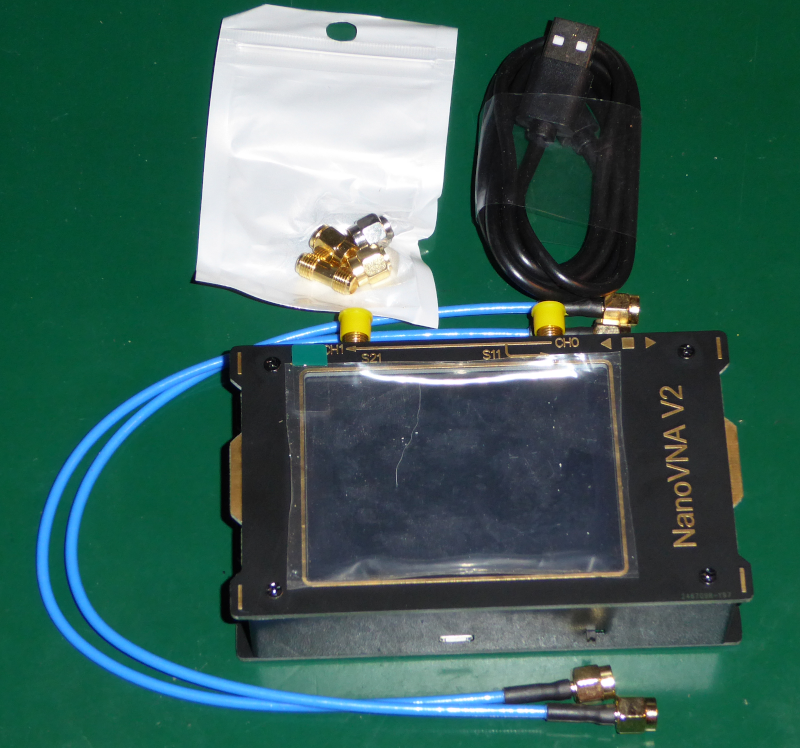 I haven't done much with it except to turn it on and see if it is alive.
I haven't done much with it except to turn it on and see if it is alive.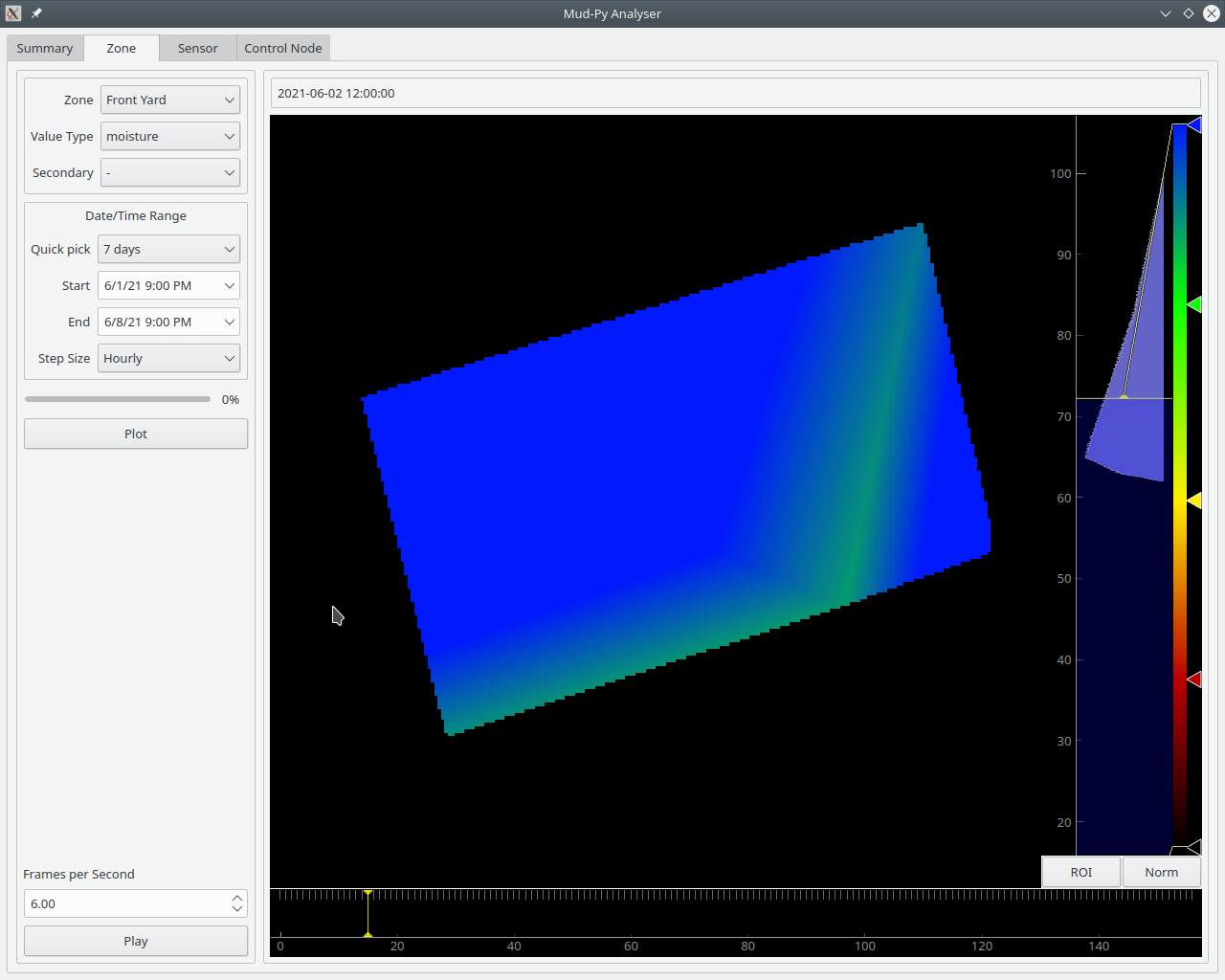 The heatmap says the whole yard was soaked. I know it isn't true because individual sensors close to the house stayed at about 35%. That chart up there says the whole yard was above 60%.
The heatmap says the whole yard was soaked. I know it isn't true because individual sensors close to the house stayed at about 35%. That chart up there says the whole yard was above 60%.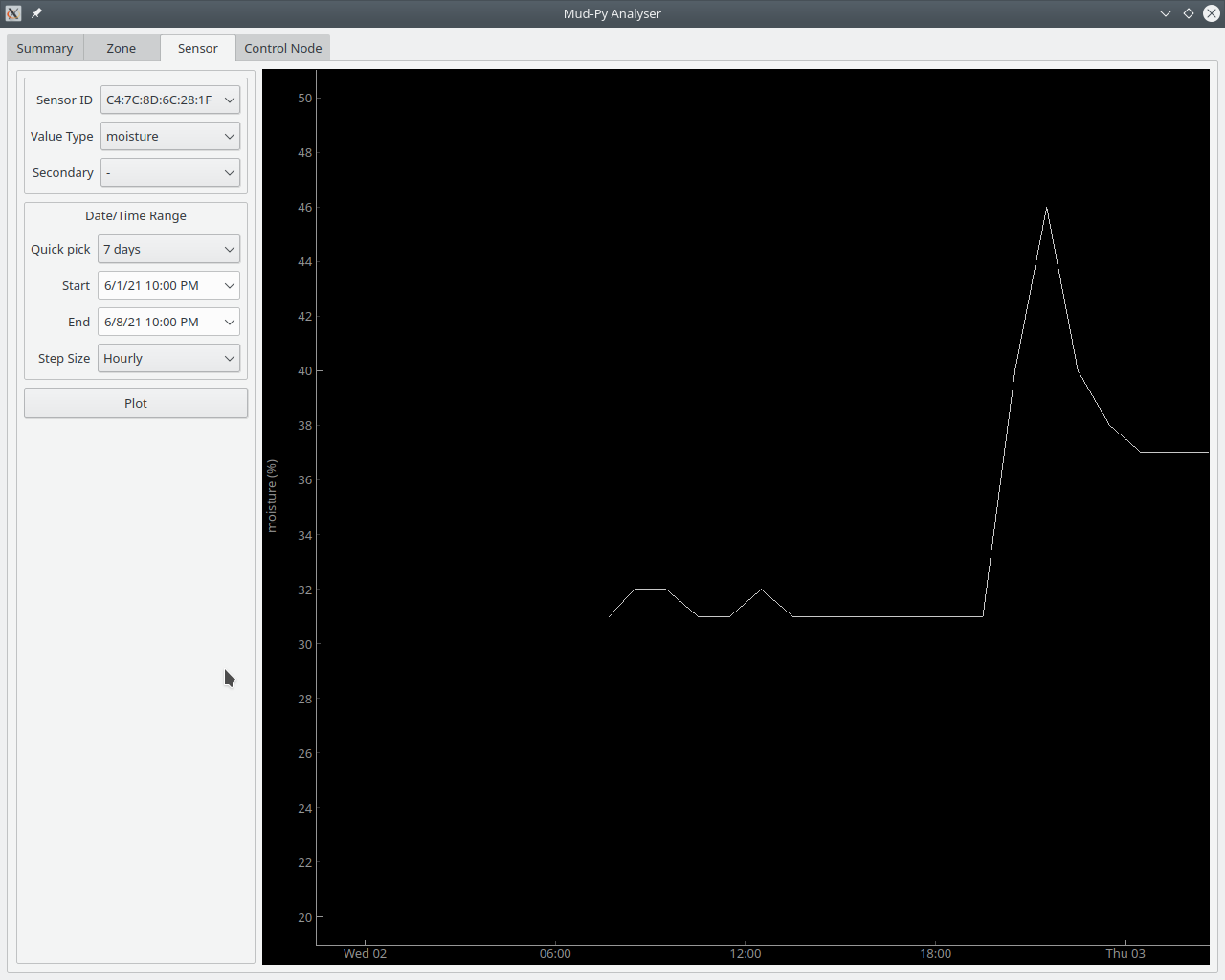 The flat area to the left is a little over 30% - at the same time the heatmap is showing 60% over the whole yard.
The flat area to the left is a little over 30% - at the same time the heatmap is showing 60% over the whole yard.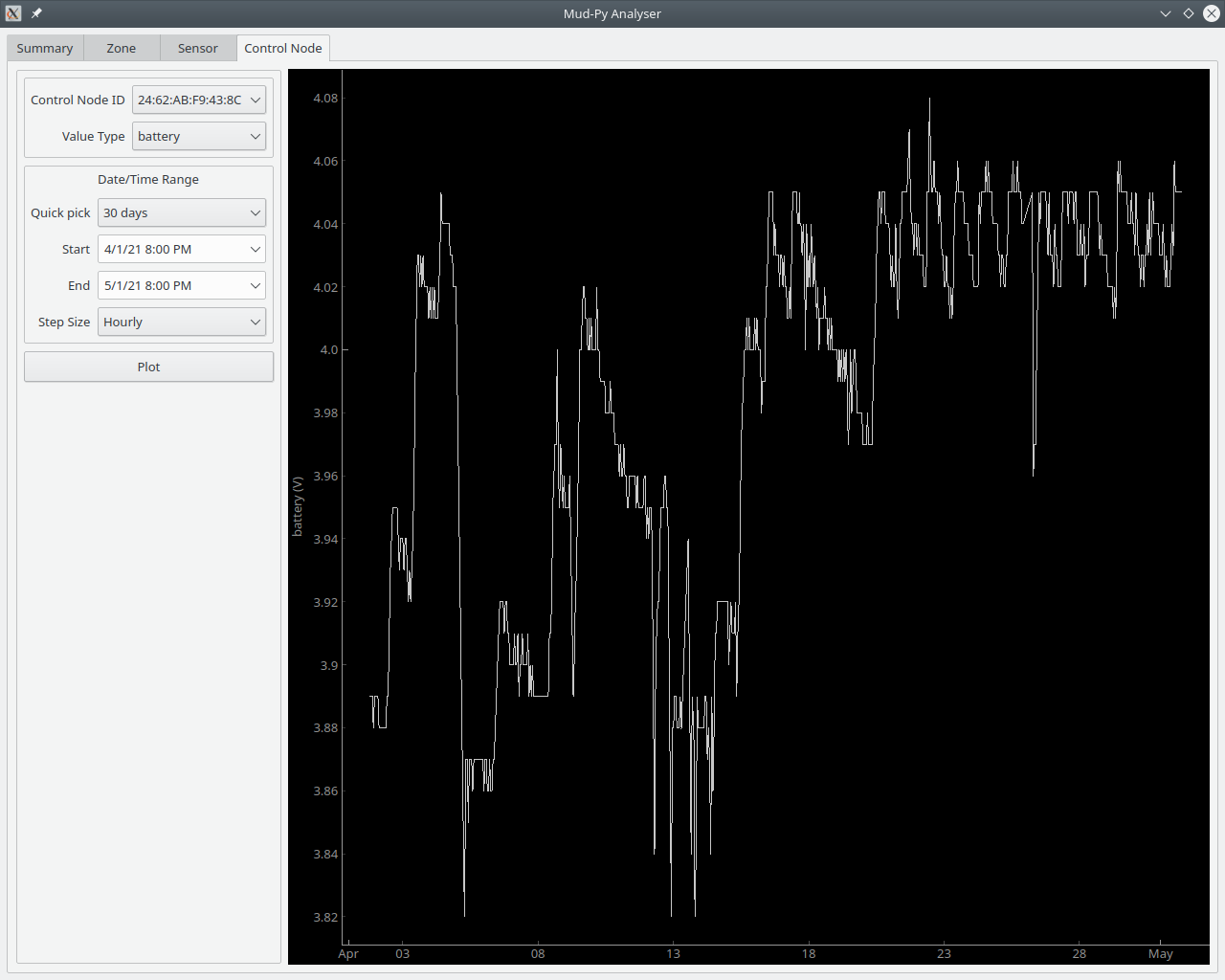 That's the battery voltage of one of the control nodes over the last thirty days. The early part of April was rather nasty, weather wise, and it shows in the battery voltage. The solar cells weren't getting enough sun to fully charge the battery. Since about 20 April, things have been better. The battery voltage zig-zags over the day and night cycle, but it has stayed rather high.
That's the battery voltage of one of the control nodes over the last thirty days. The early part of April was rather nasty, weather wise, and it shows in the battery voltage. The solar cells weren't getting enough sun to fully charge the battery. Since about 20 April, things have been better. The battery voltage zig-zags over the day and night cycle, but it has stayed rather high.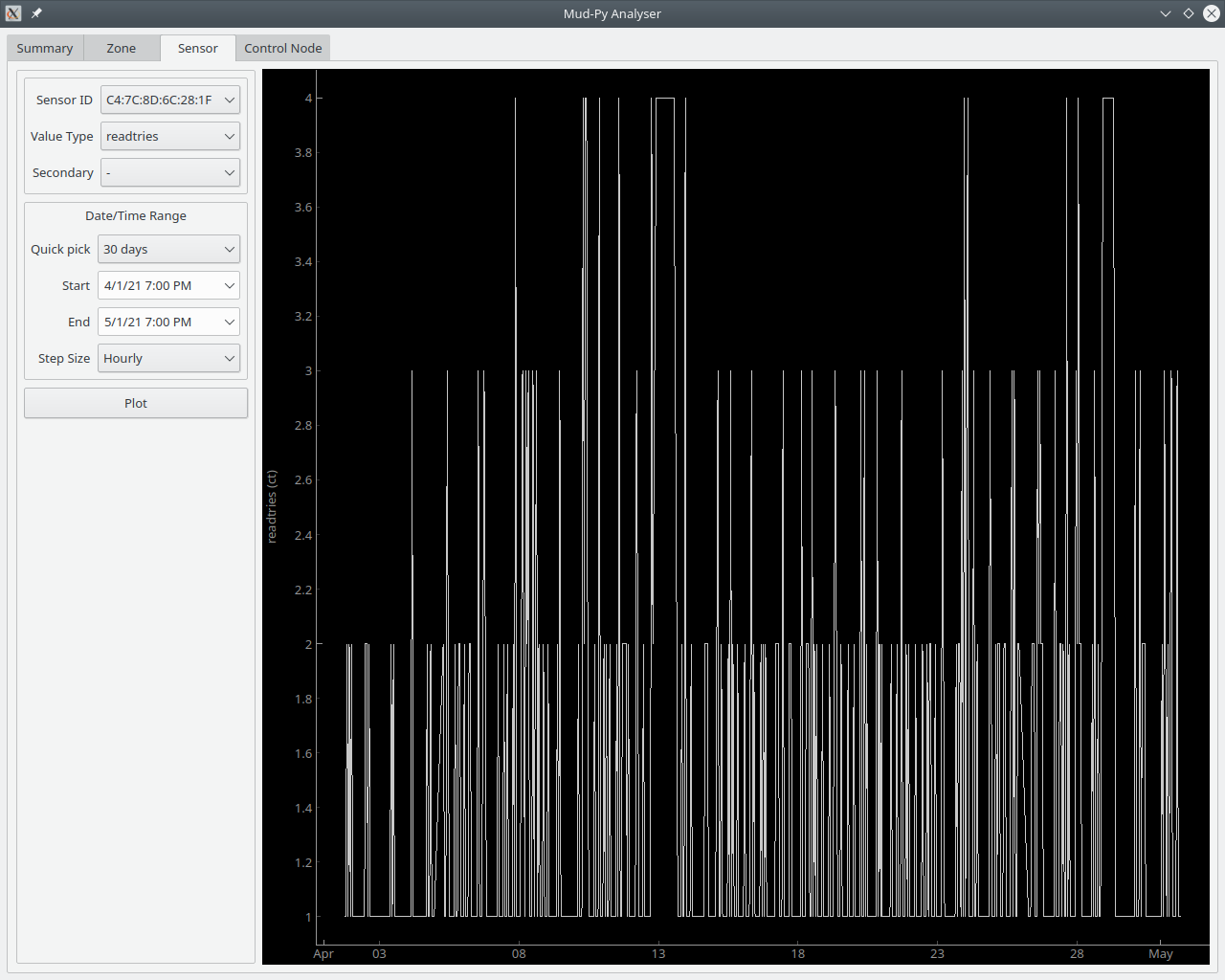 Most of the time, it is read on the first try. It often gets up to two tries, and sometimes three. Between 8 April and 13 April, it has periods where it gets up to four tries. That's when it rained here.
Most of the time, it is read on the first try. It often gets up to two tries, and sometimes three. Between 8 April and 13 April, it has periods where it gets up to four tries. That's when it rained here.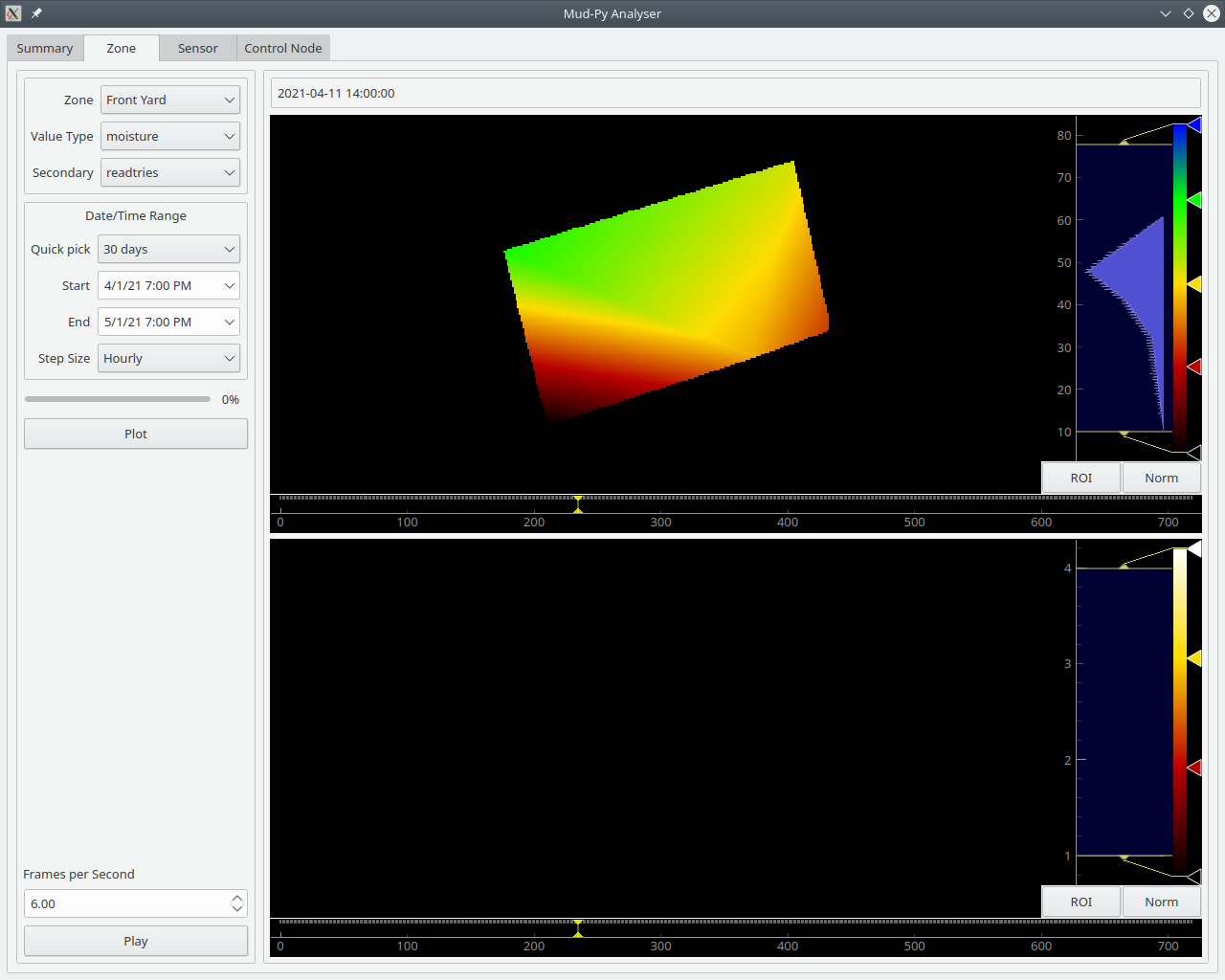
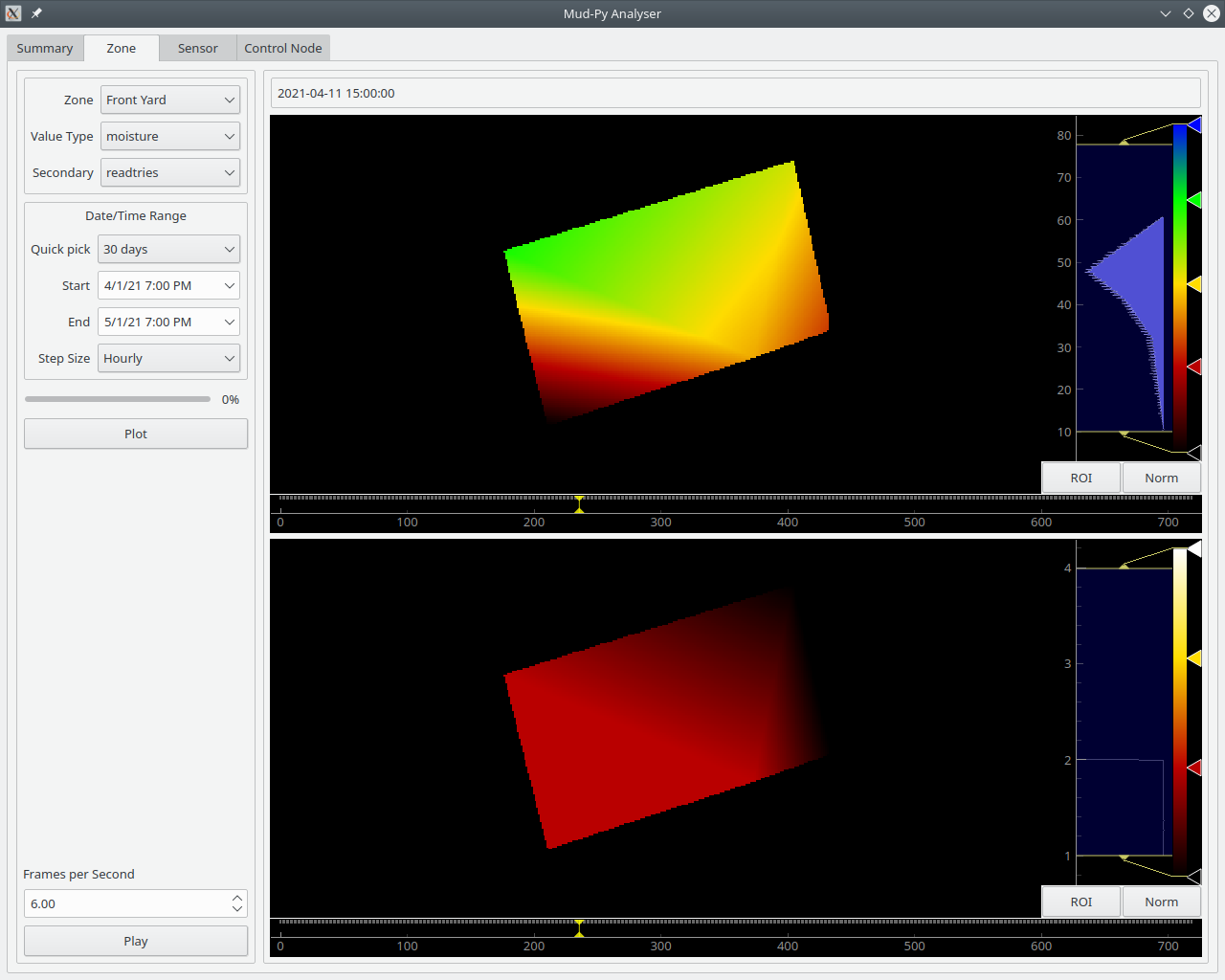
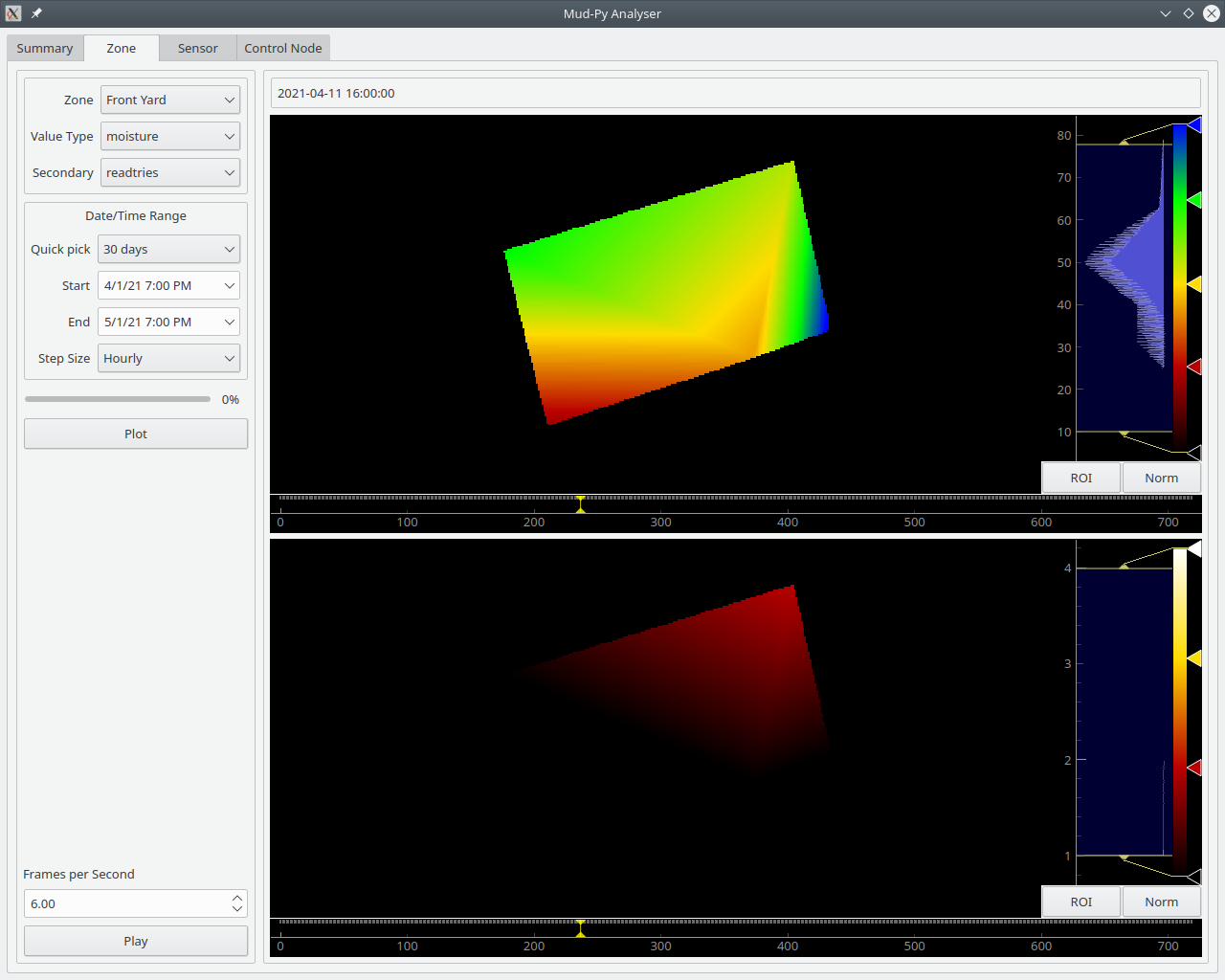
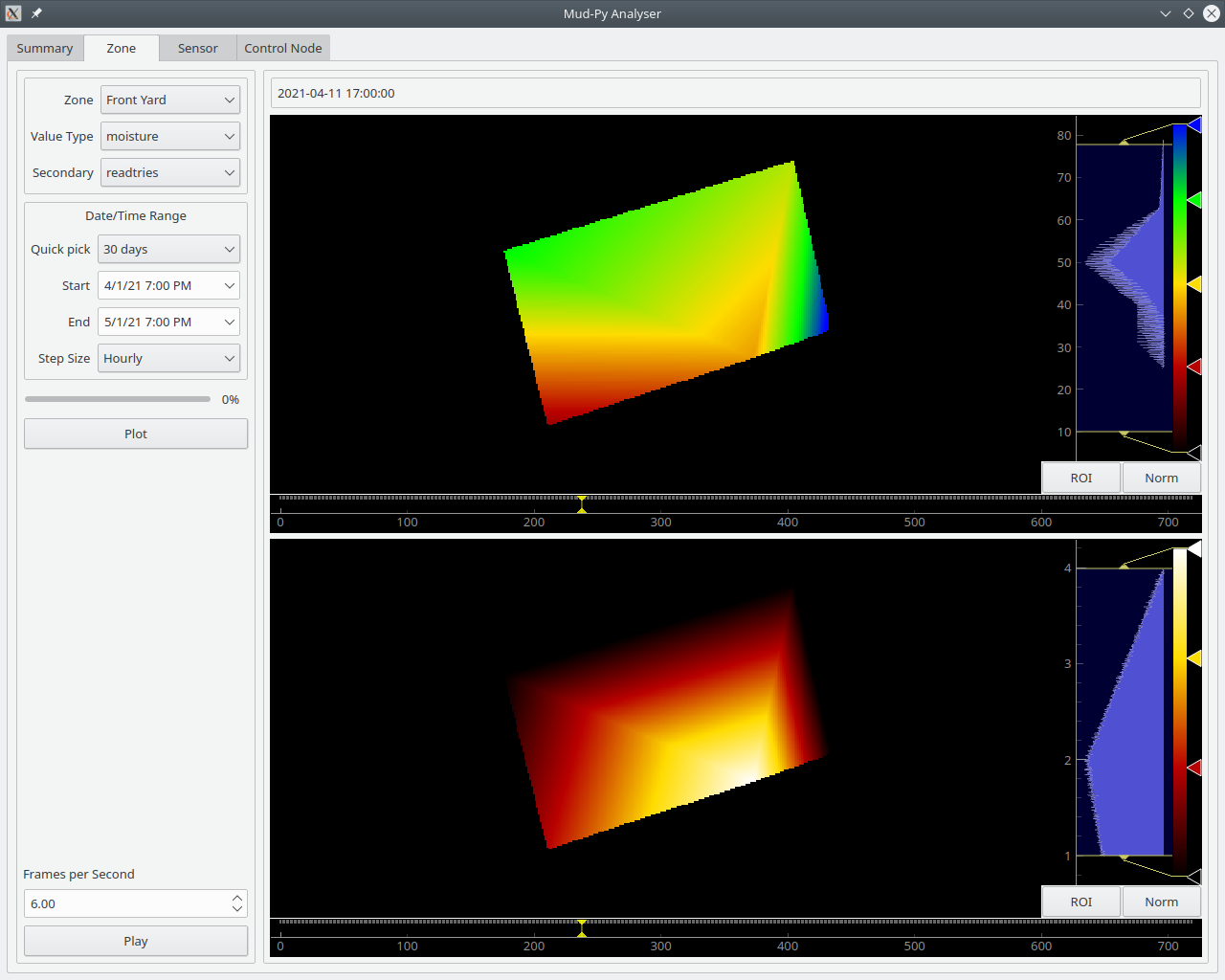 An hour later, and it is still raining. The lower part of the yard is collecting some serious moisture:
An hour later, and it is still raining. The lower part of the yard is collecting some serious moisture: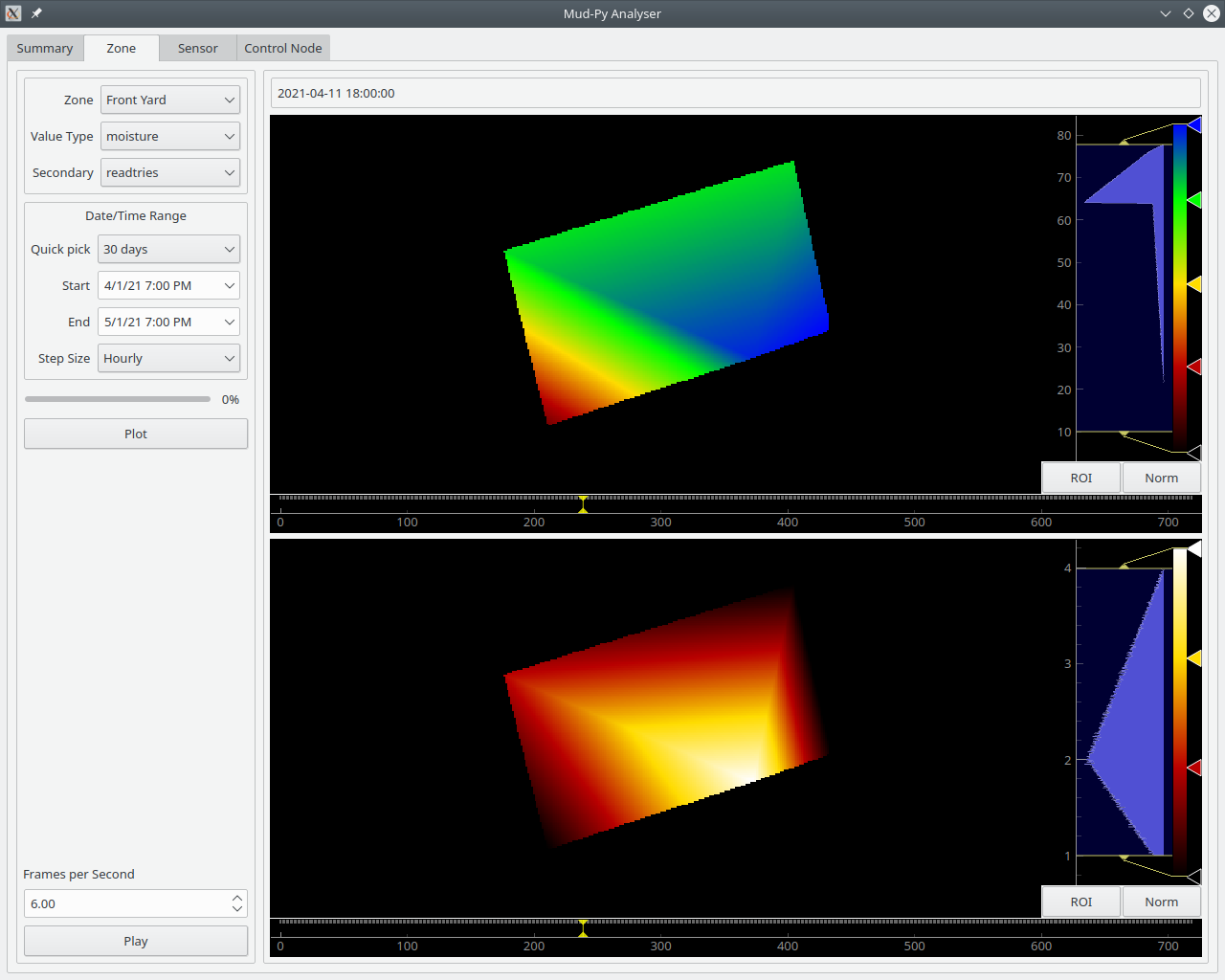 A couple of hours later, and the rain is dying down again - the "readtries" have dropped over the whole yard:
A couple of hours later, and the rain is dying down again - the "readtries" have dropped over the whole yard: The whole yard has over 50 percent soil moisture. The water hasn't had time to seep down into the lower layers - it is still up in the top 10 centimeters (4 inches) or so where the sensors can "see" it.
The whole yard has over 50 percent soil moisture. The water hasn't had time to seep down into the lower layers - it is still up in the top 10 centimeters (4 inches) or so where the sensors can "see" it.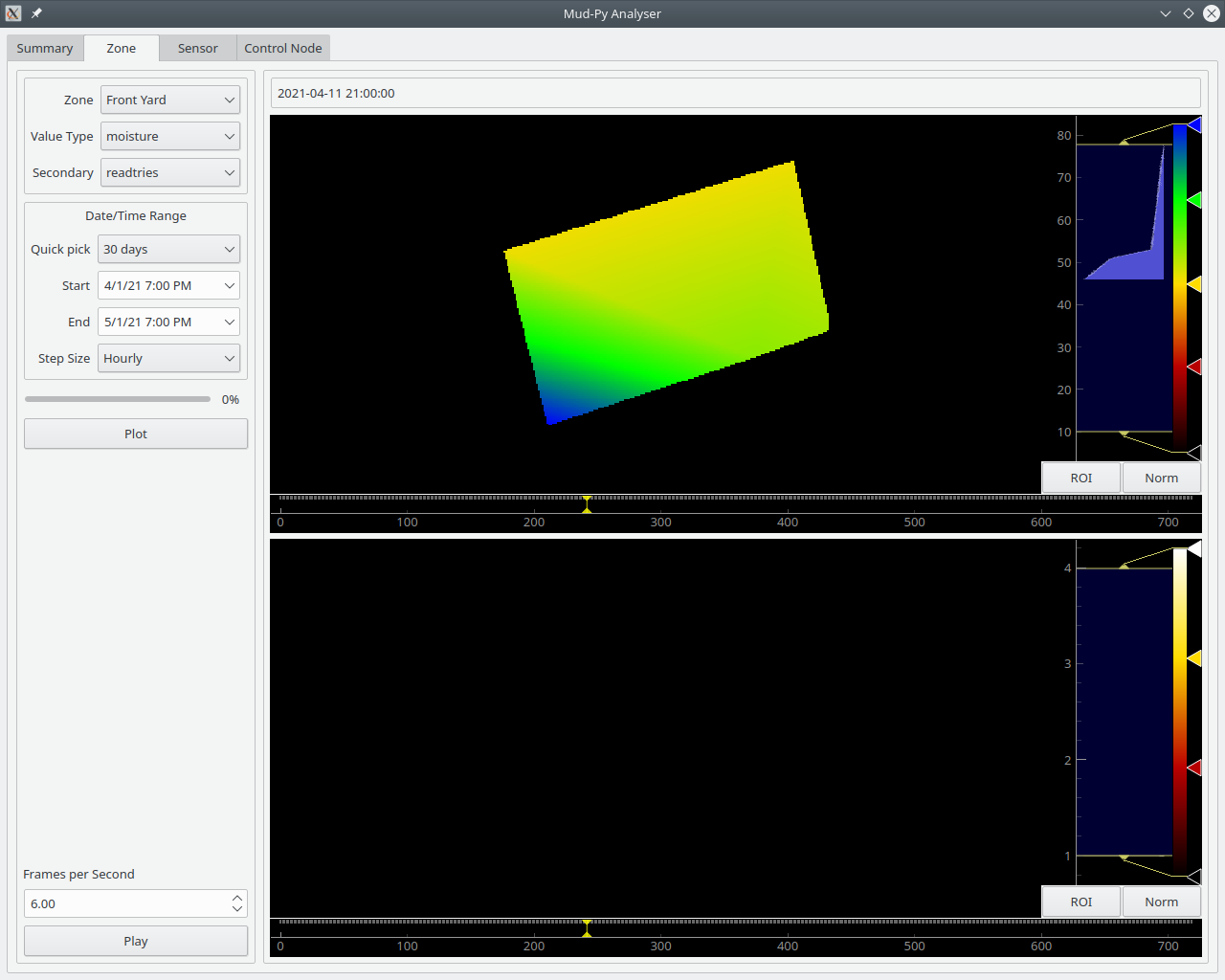 The moisture over most of the yard has dropped a bit. The lower left corner there has finally gotten a little water - it seems to lag behind the rest of the yard, even on other days.
The moisture over most of the yard has dropped a bit. The lower left corner there has finally gotten a little water - it seems to lag behind the rest of the yard, even on other days.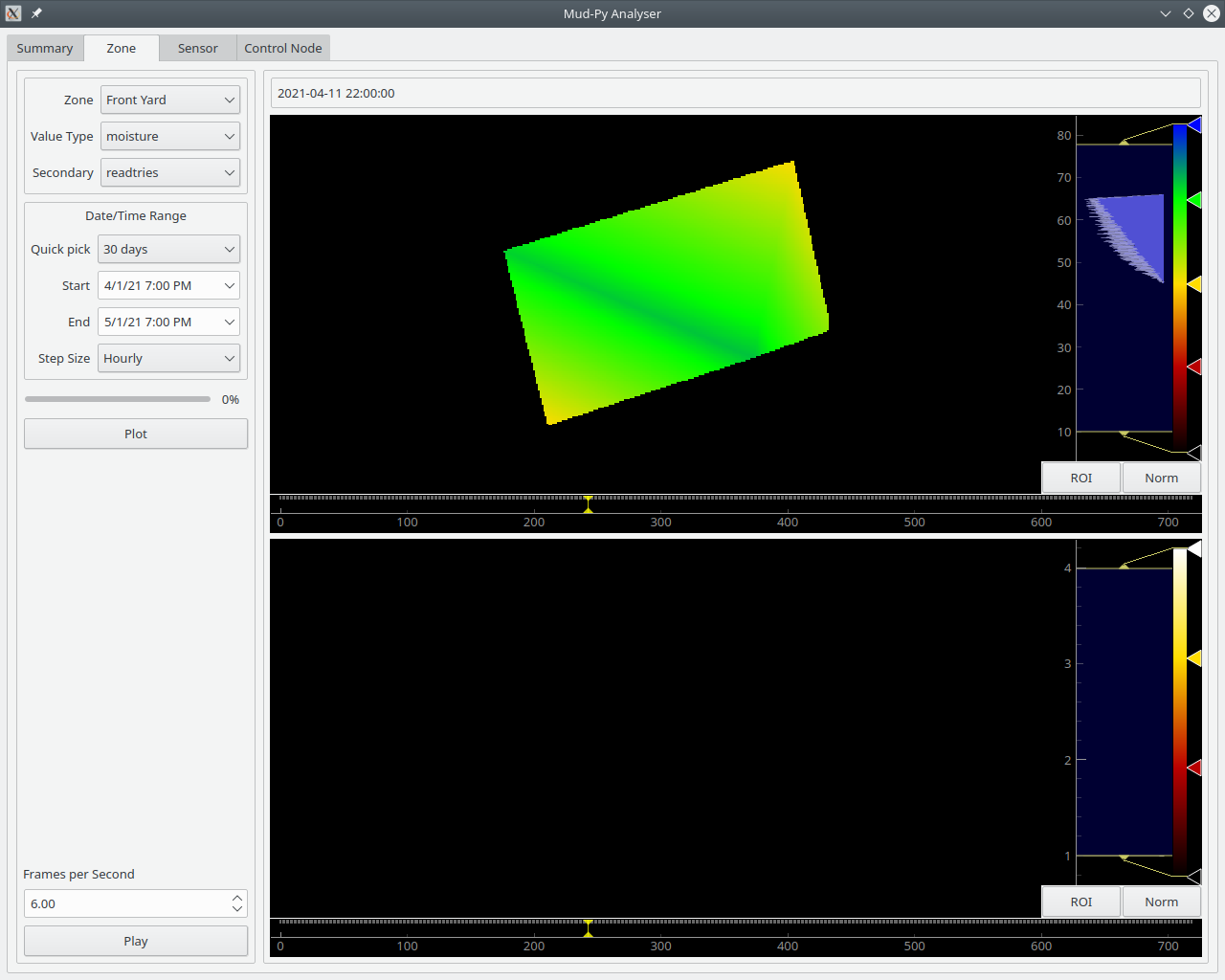 The rain has pretty well stopped. It stayed overcast until around 13 April, with occasional showers. That afternoon and evening of 11 April was the hardest rain, though.
The rain has pretty well stopped. It stayed overcast until around 13 April, with occasional showers. That afternoon and evening of 11 April was the hardest rain, though.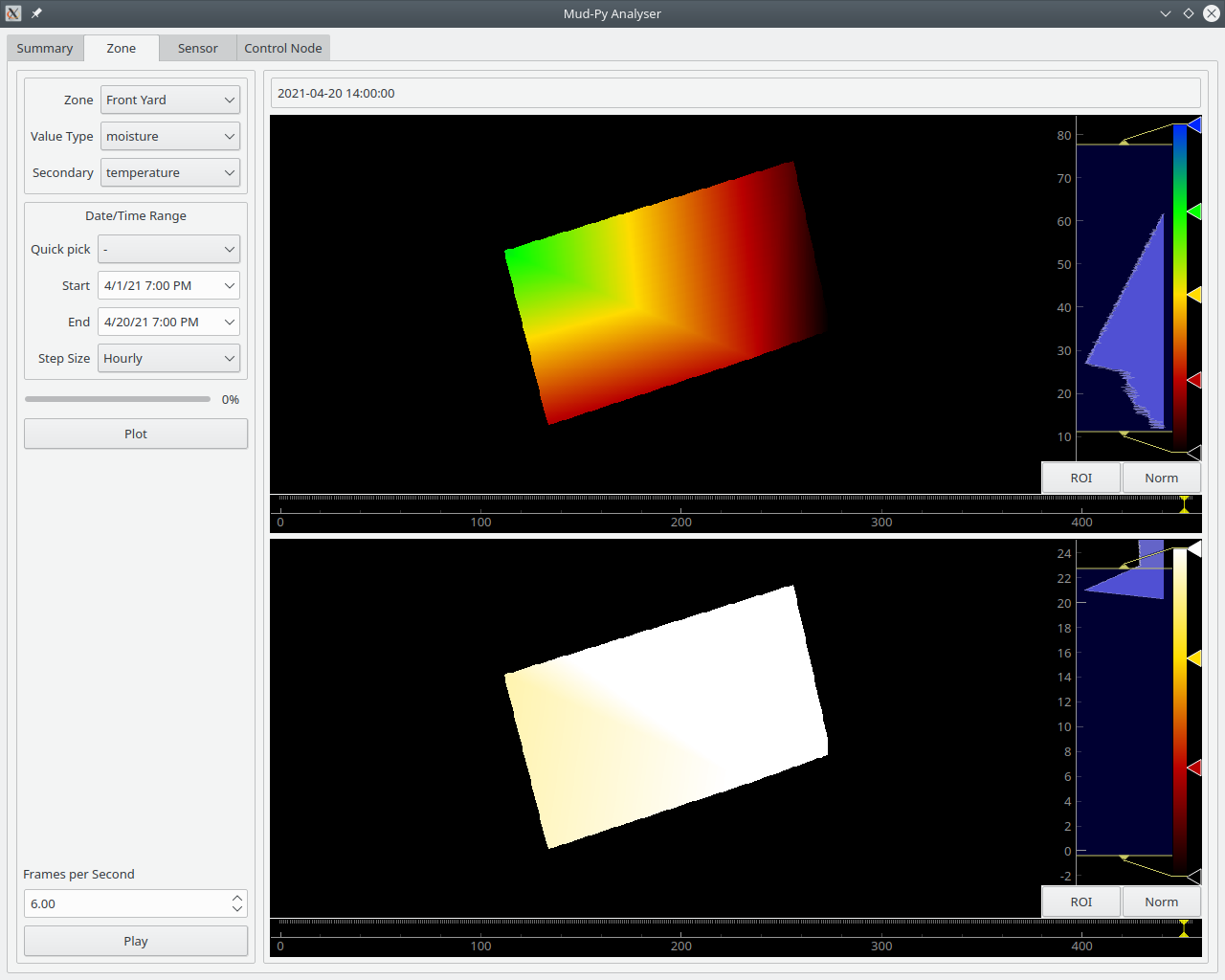
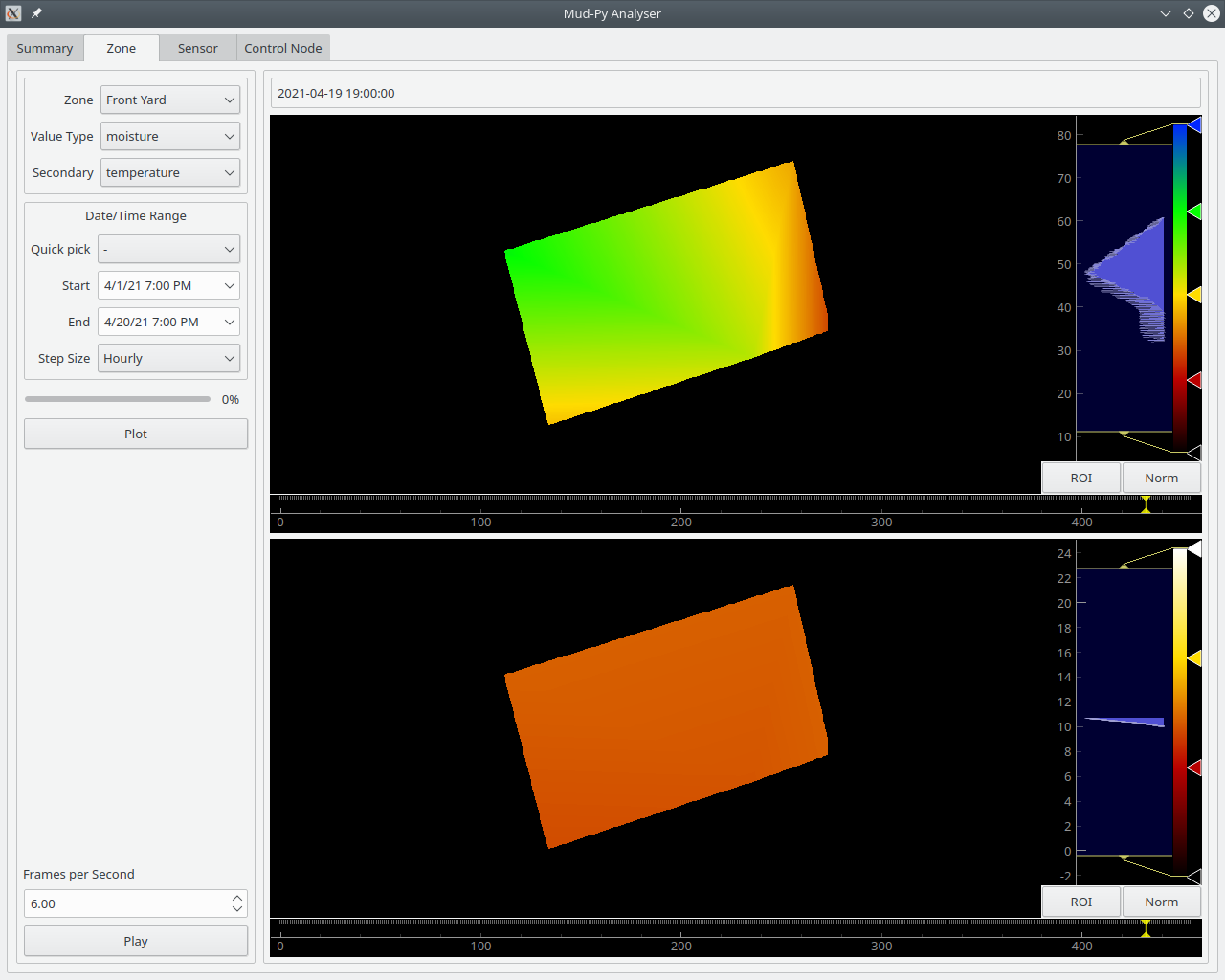
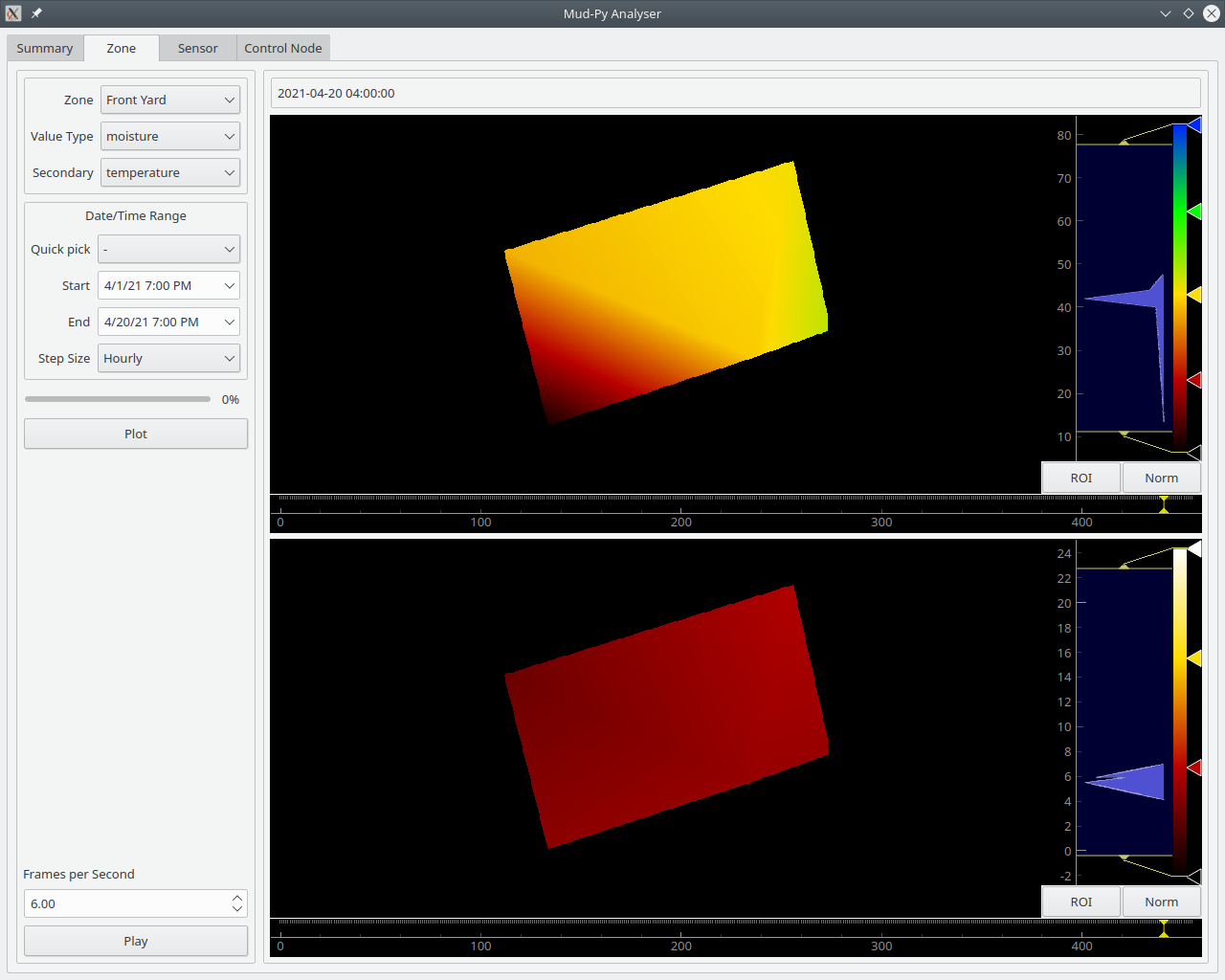 That first image is in the 7 o'clock evening as things are cooling off. It's still around 11 degrees C, and the soil moisture has gone up compared to what it was under the mid-day sun.
That first image is in the 7 o'clock evening as things are cooling off. It's still around 11 degrees C, and the soil moisture has gone up compared to what it was under the mid-day sun.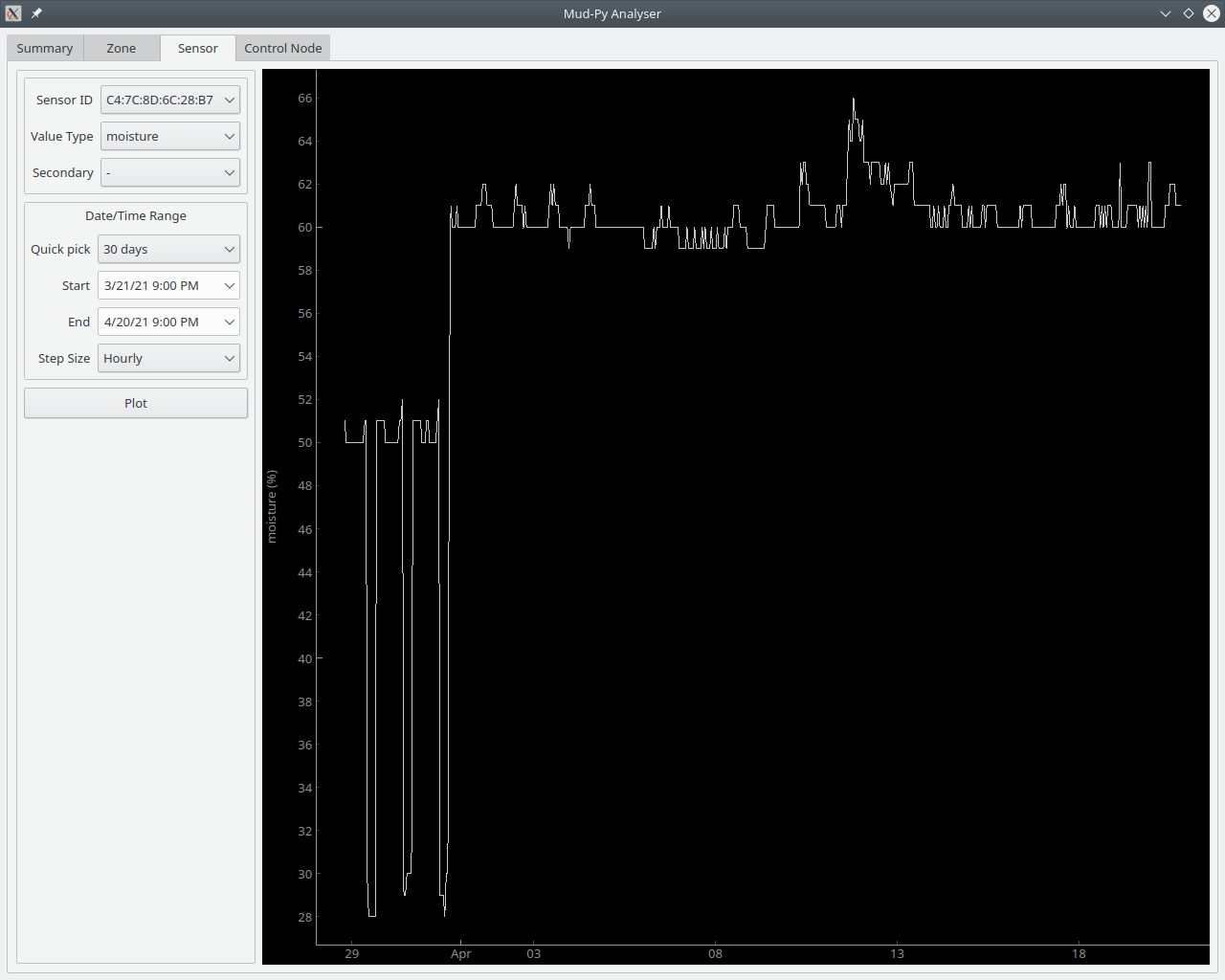 It wanders up and down a few percent, but is has stayed pretty much stable since we got rain around the beginning of April. You can also see where we got more rain around 12 and 13 April.
It wanders up and down a few percent, but is has stayed pretty much stable since we got rain around the beginning of April. You can also see where we got more rain around 12 and 13 April.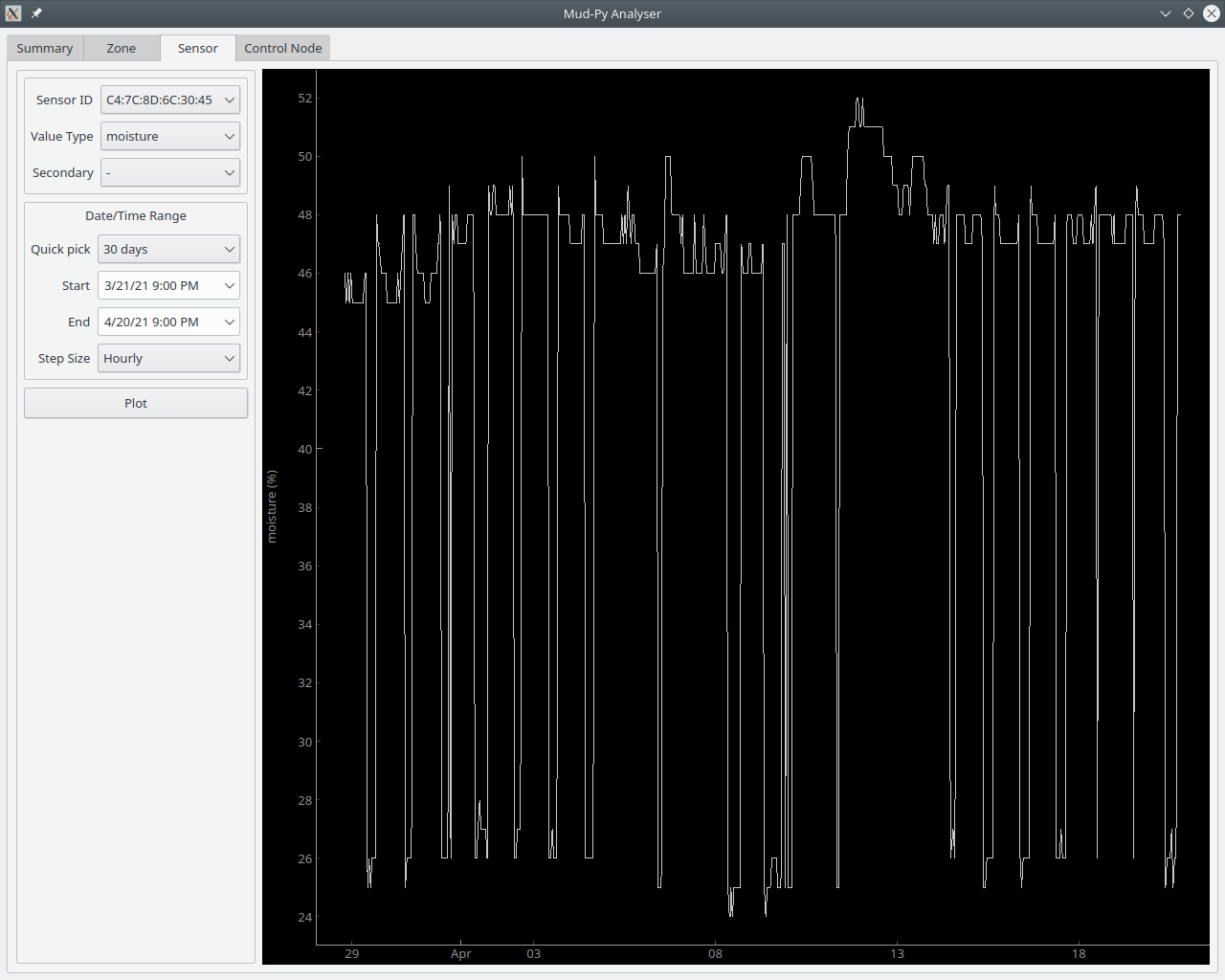 I'm going to have to see if I can tell what the difference is in the soil around the sensors that have large variations and the ones that are more staid. Maybe the bark over the dirt is deeper or something.
I'm going to have to see if I can tell what the difference is in the soil around the sensors that have large variations and the ones that are more staid. Maybe the bark over the dirt is deeper or something.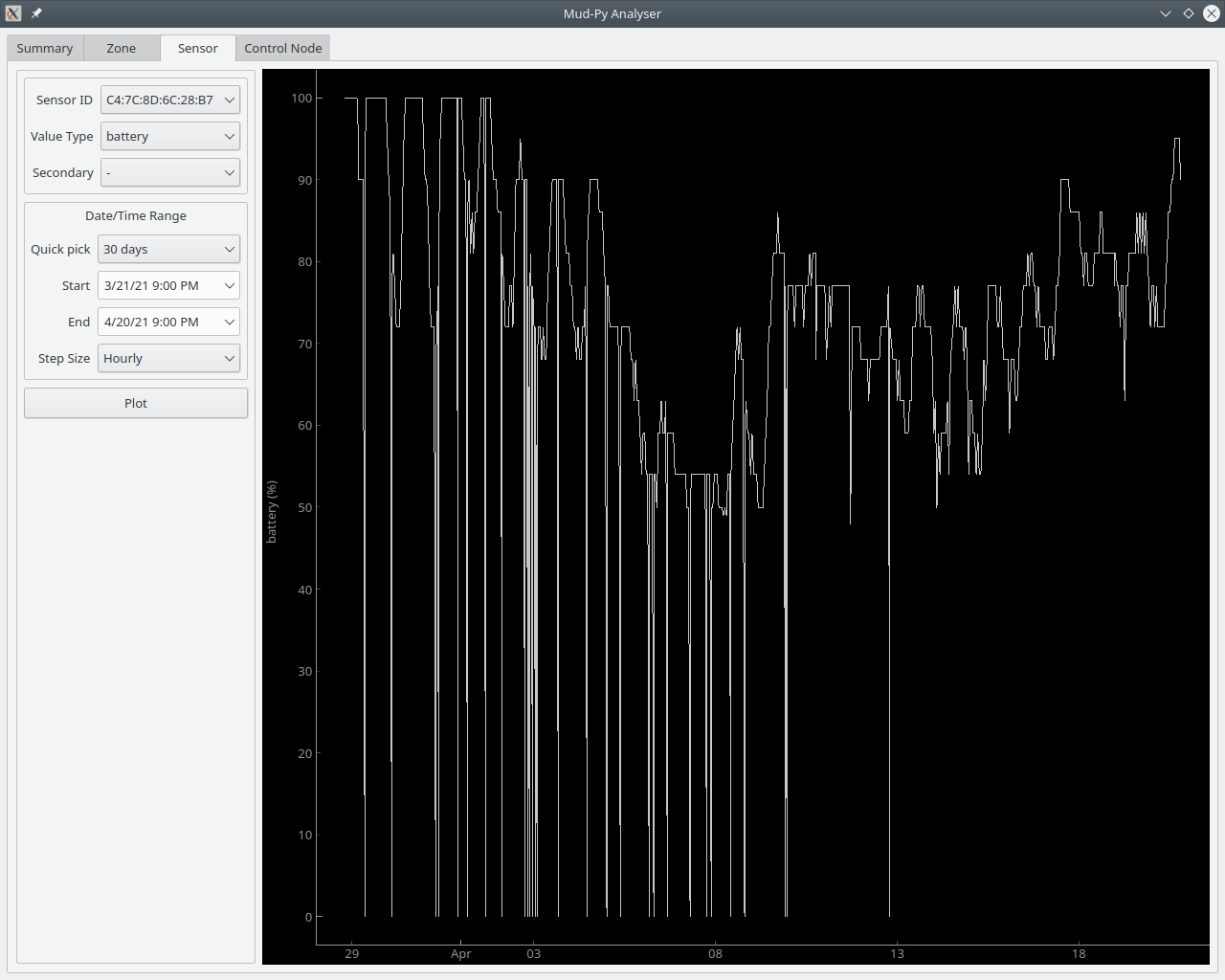
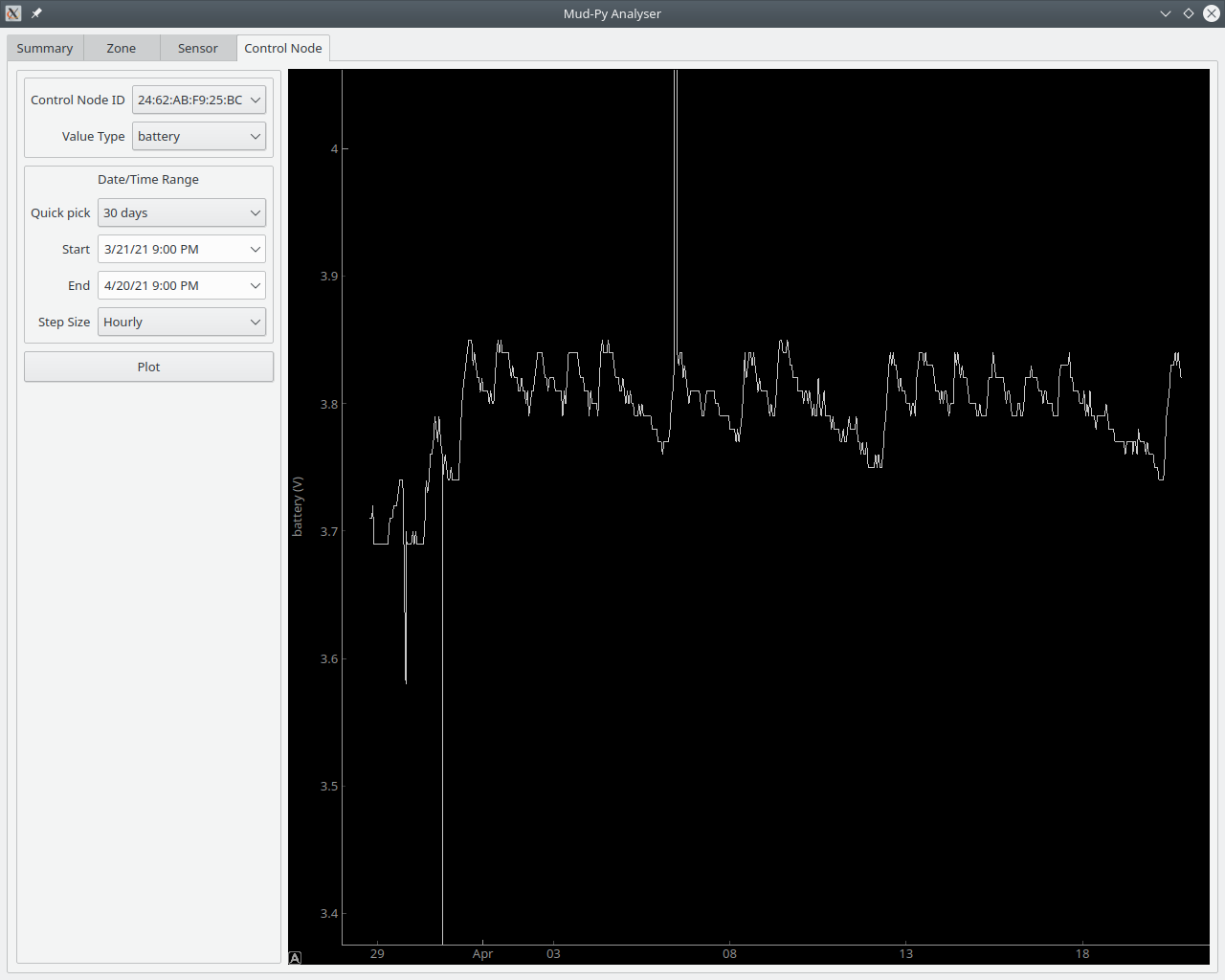 There's a slight daily variation of the voltage as the cells charge during the day and then discharge a bit at night. You can also see the days when it was cloudy here. Those are the longer stretches where the voltage drops for two or three days. I think I can safely say that the power banks will be able to power the control nodes for at least a week of bad weather.
There's a slight daily variation of the voltage as the cells charge during the day and then discharge a bit at night. You can also see the days when it was cloudy here. Those are the longer stretches where the voltage drops for two or three days. I think I can safely say that the power banks will be able to power the control nodes for at least a week of bad weather.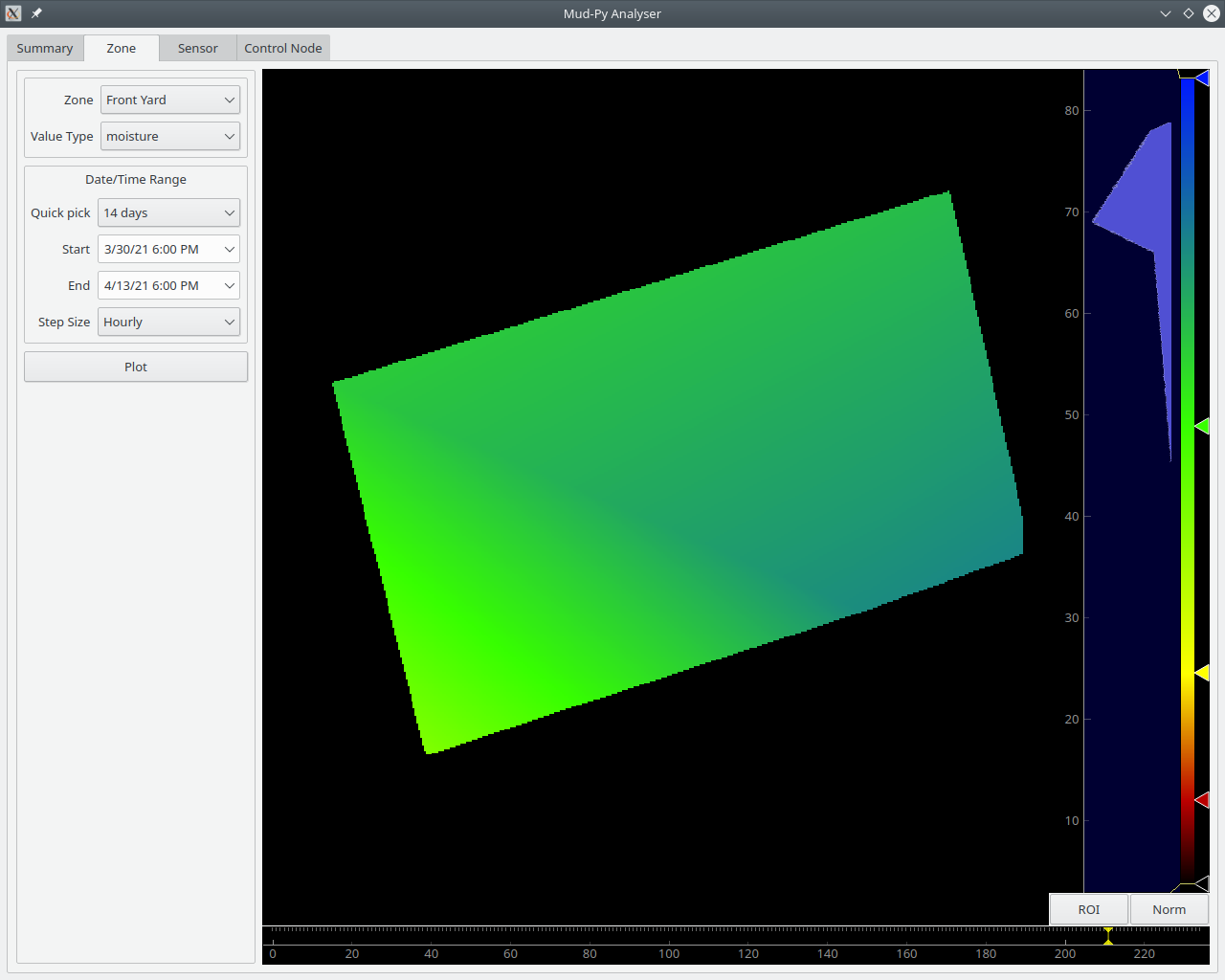
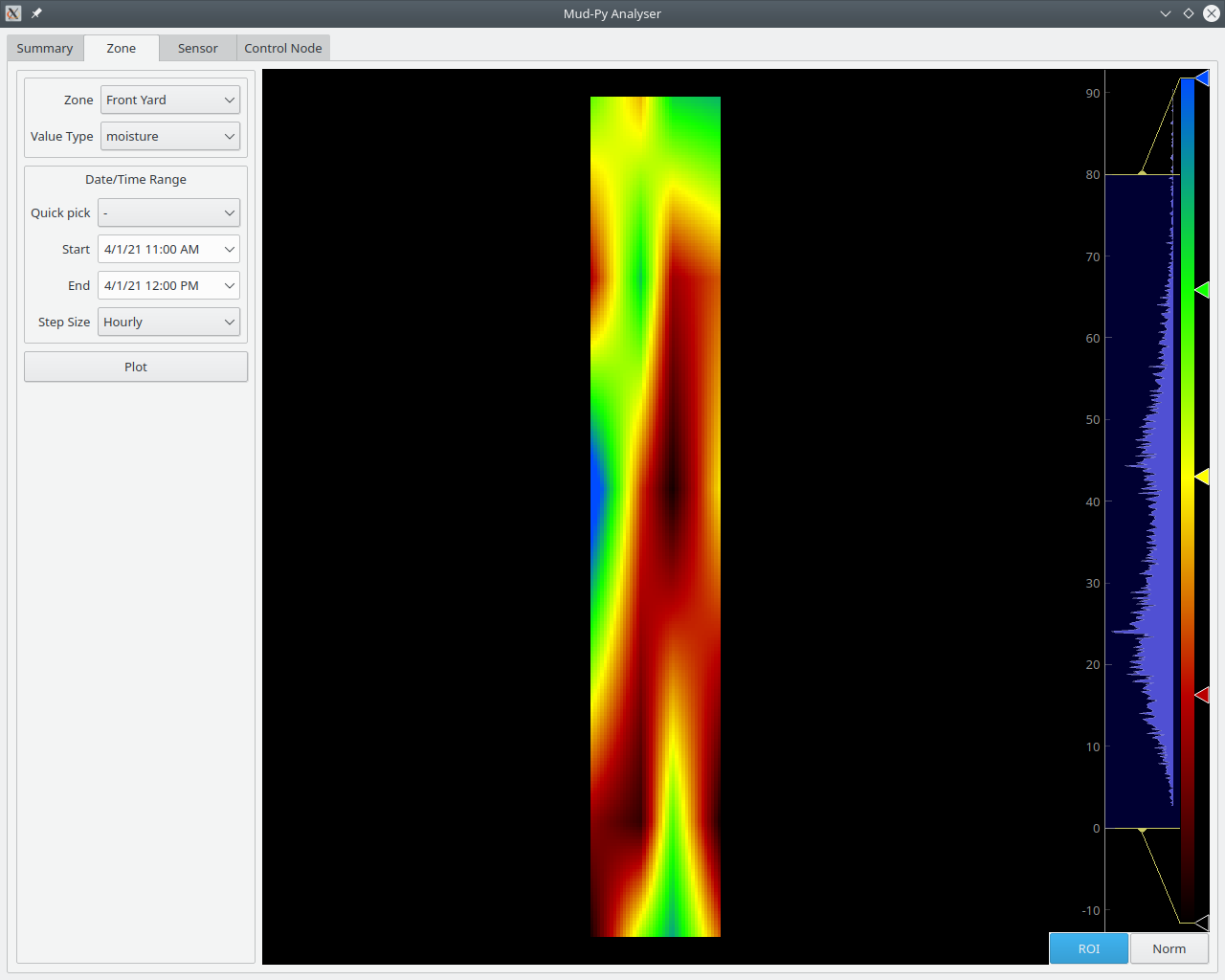 That's the distribution of soil moisture in my garden from 1 April, just before noon time.
That's the distribution of soil moisture in my garden from 1 April, just before noon time.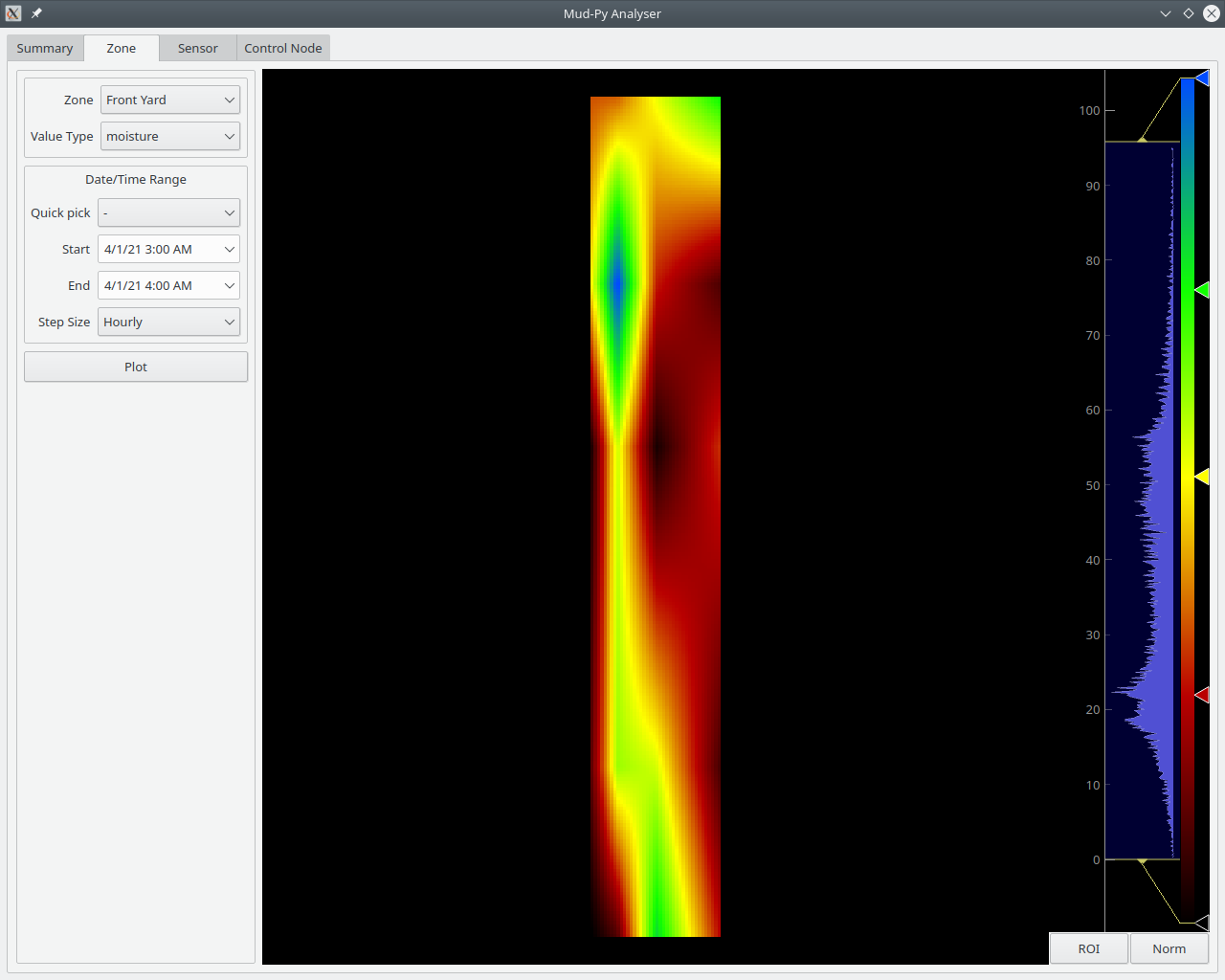 As you can see, the moisture changes over the course of the day.
As you can see, the moisture changes over the course of the day.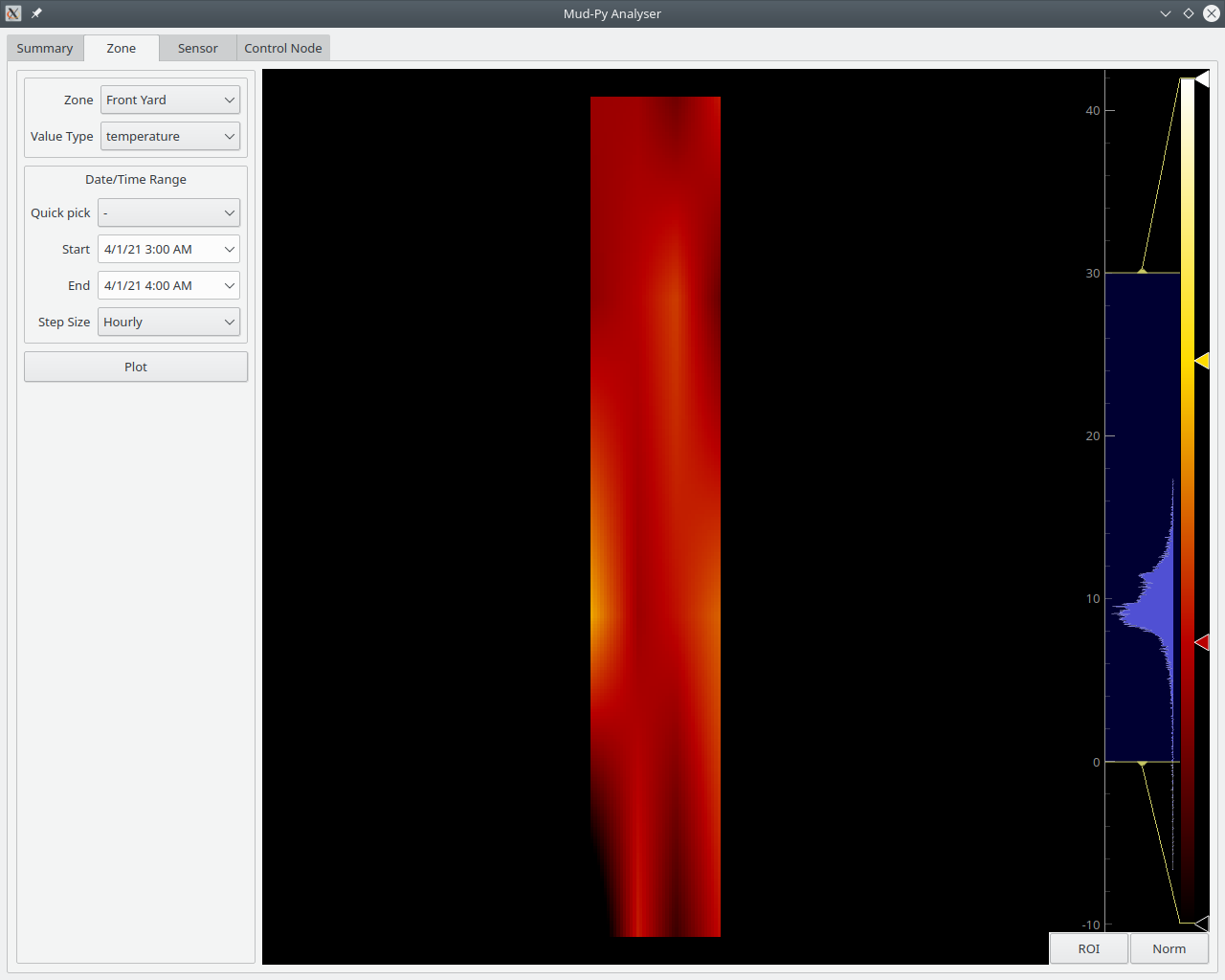
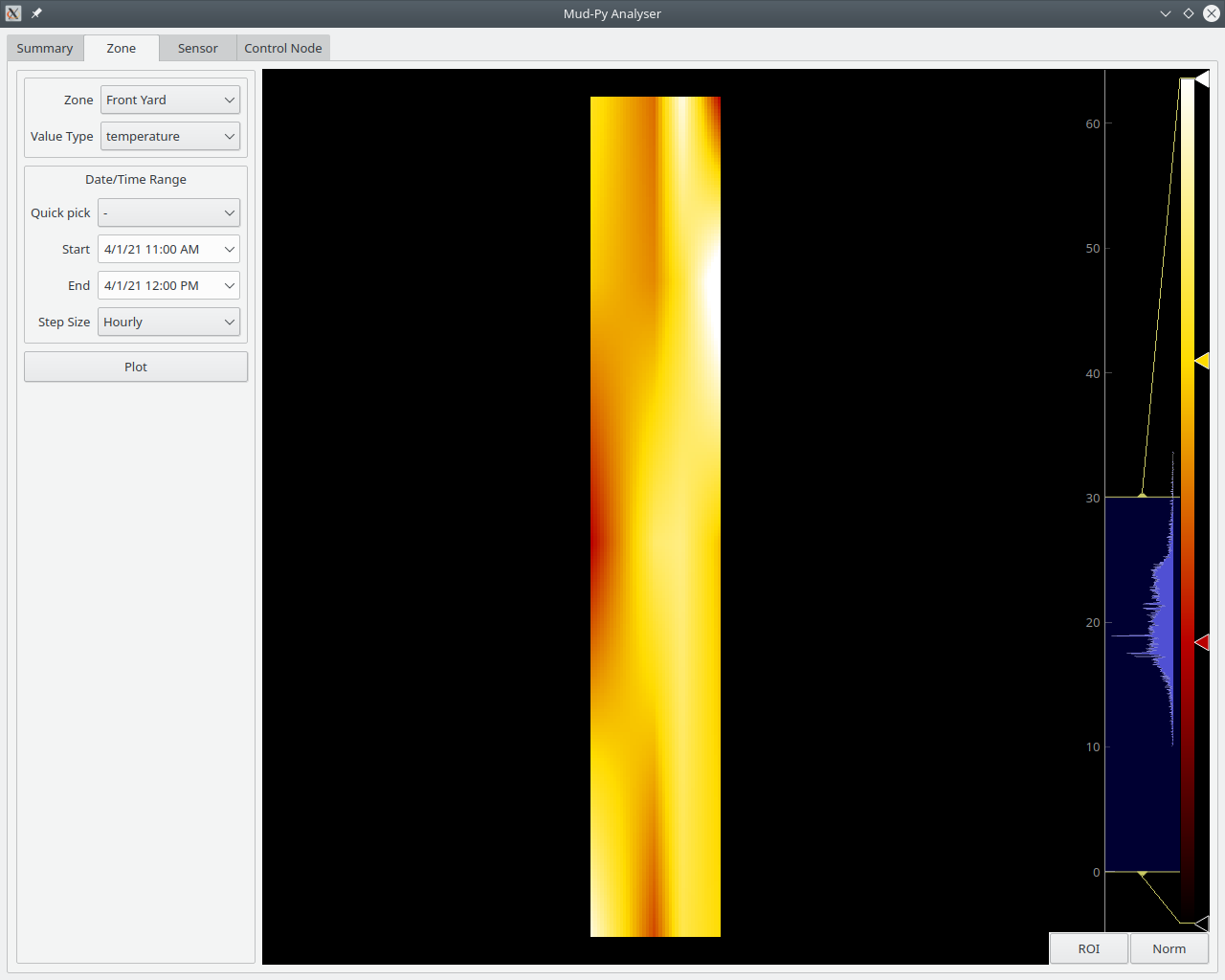
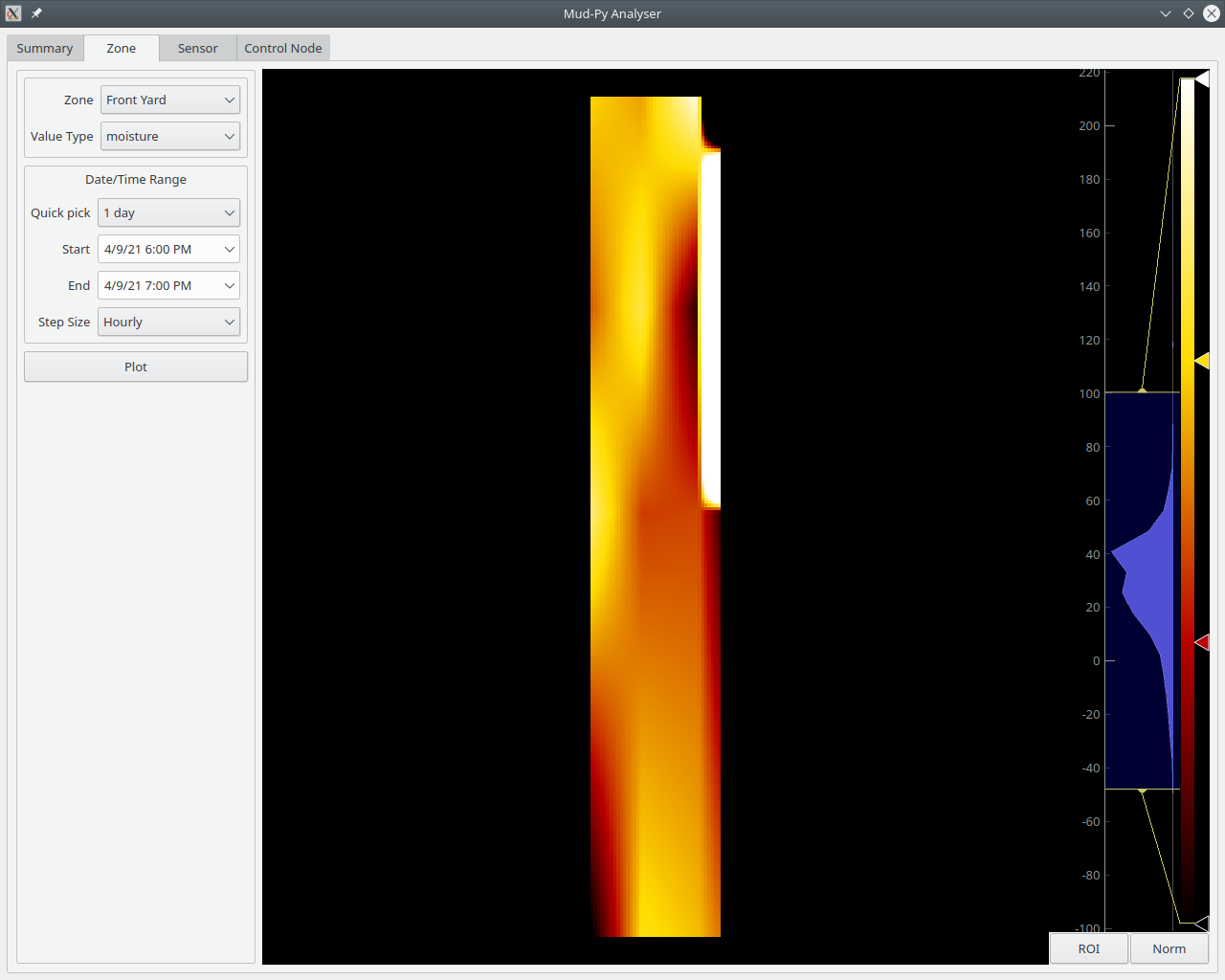
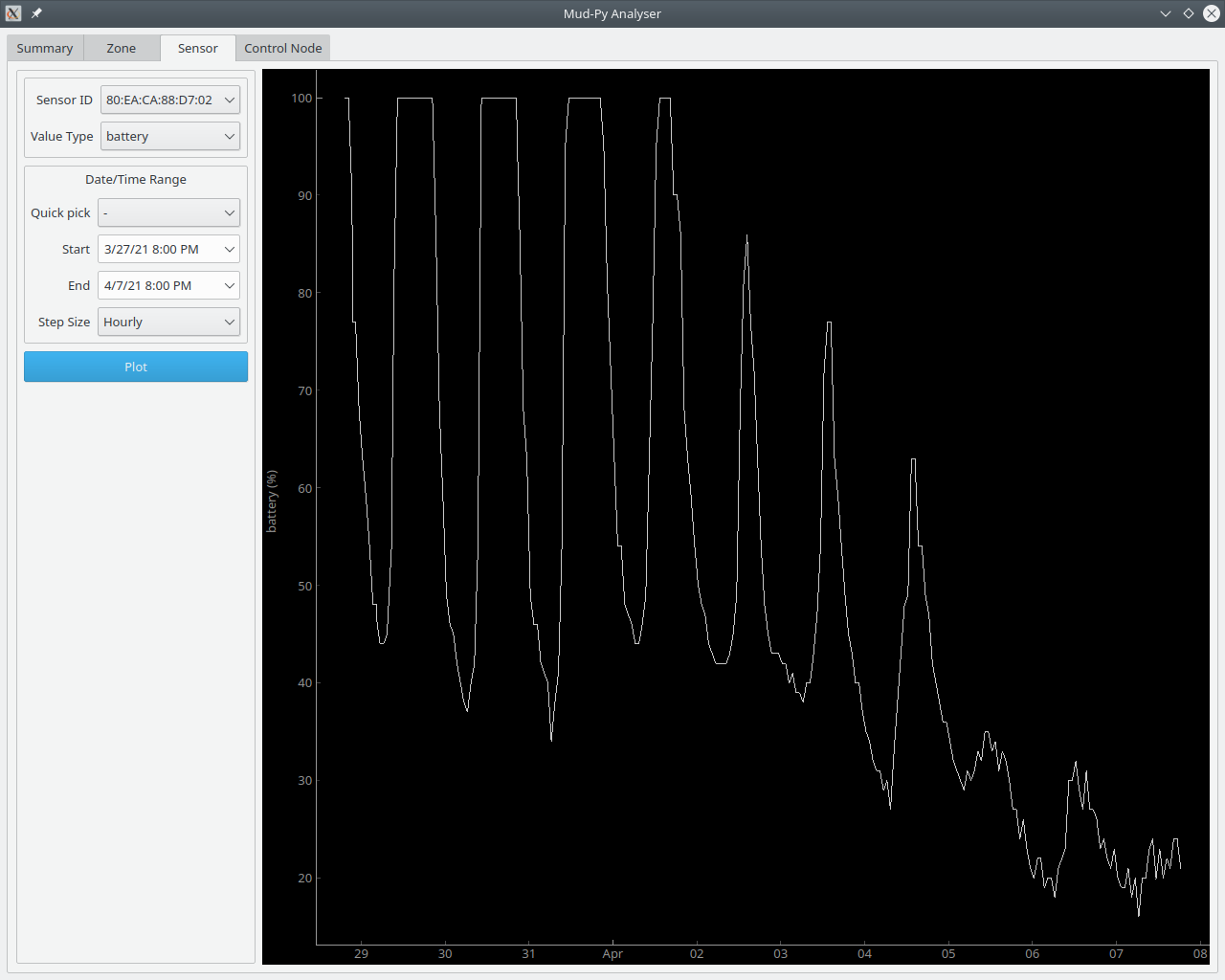 This is the temperature plot for the same sensor:
This is the temperature plot for the same sensor: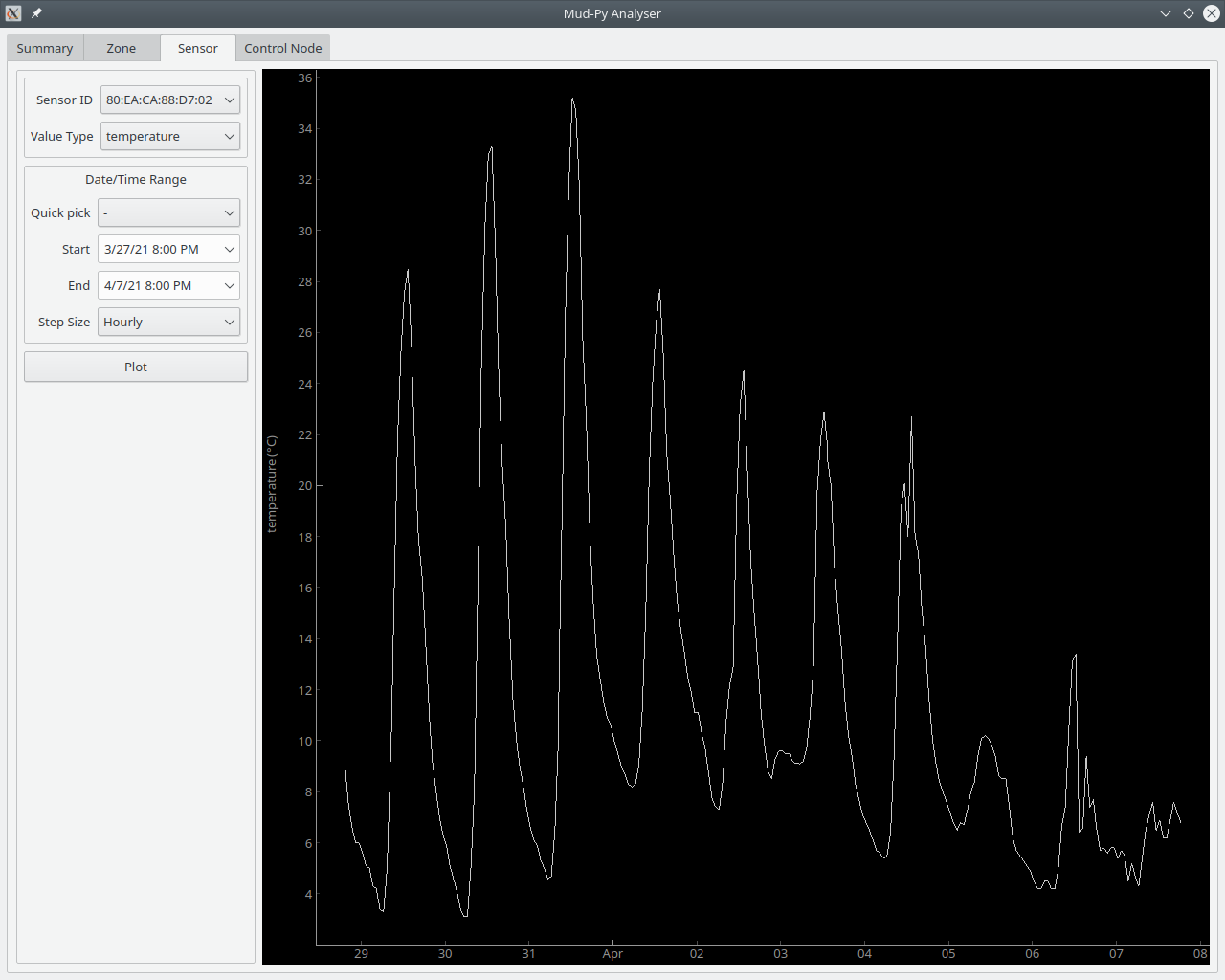 The lowest capacity matches the lowest temperatures on each day. The last three days have been cold, with temperatures staying below 10C (50F) all the time. The battery capacity has stayed low, as well. If it doesn't warm up, I may end up having to replace all the sensor batteries.
The lowest capacity matches the lowest temperatures on each day. The last three days have been cold, with temperatures staying below 10C (50F) all the time. The battery capacity has stayed low, as well. If it doesn't warm up, I may end up having to replace all the sensor batteries.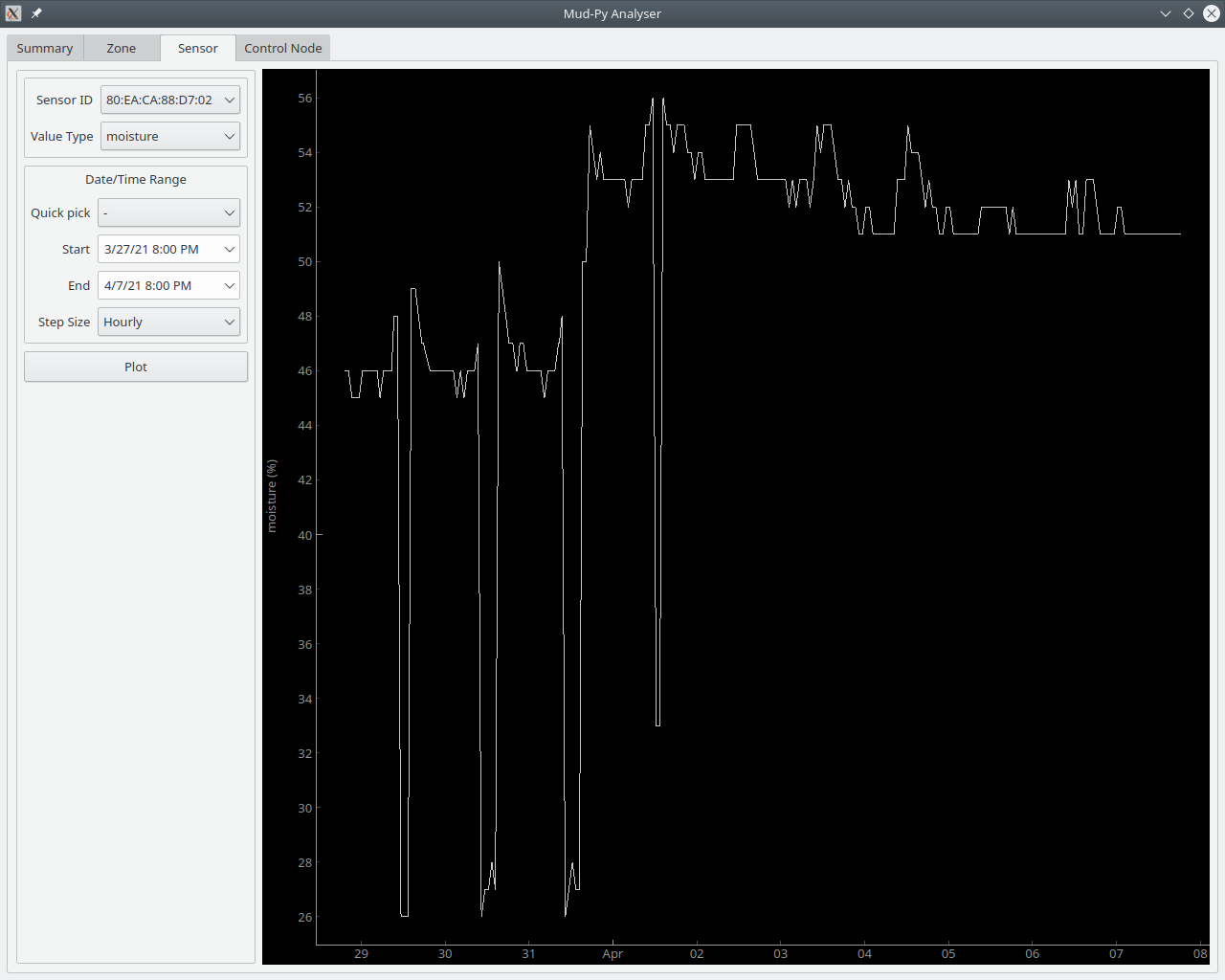 The moisture dropped each day around noon time when it was warm. Since the temperatures have gone down, the moisture has stayed more stable during the day.
The moisture dropped each day around noon time when it was warm. Since the temperatures have gone down, the moisture has stayed more stable during the day.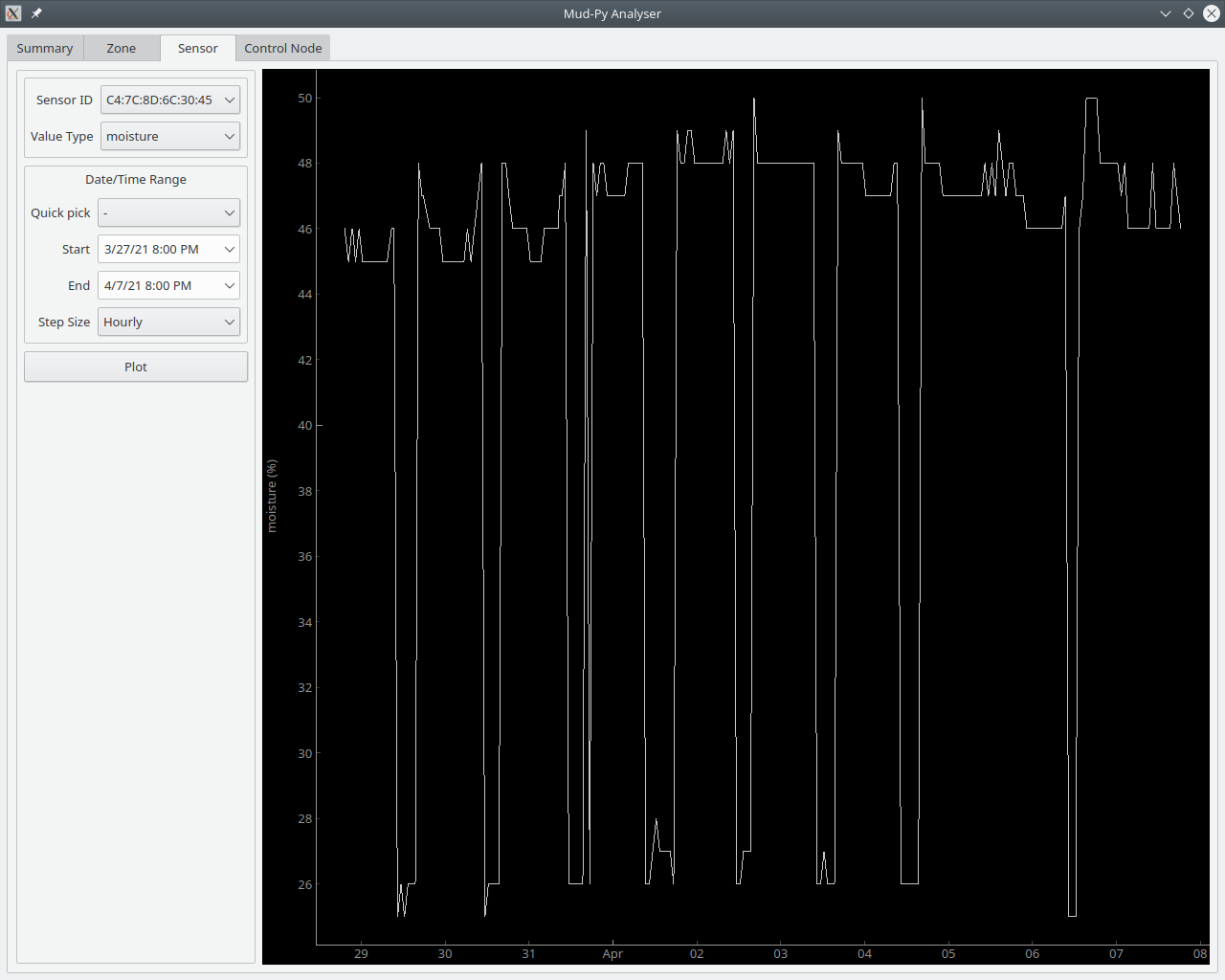 It dropped more drastically during the day, and still had drastic variations after the weather cooled down.
It dropped more drastically during the day, and still had drastic variations after the weather cooled down.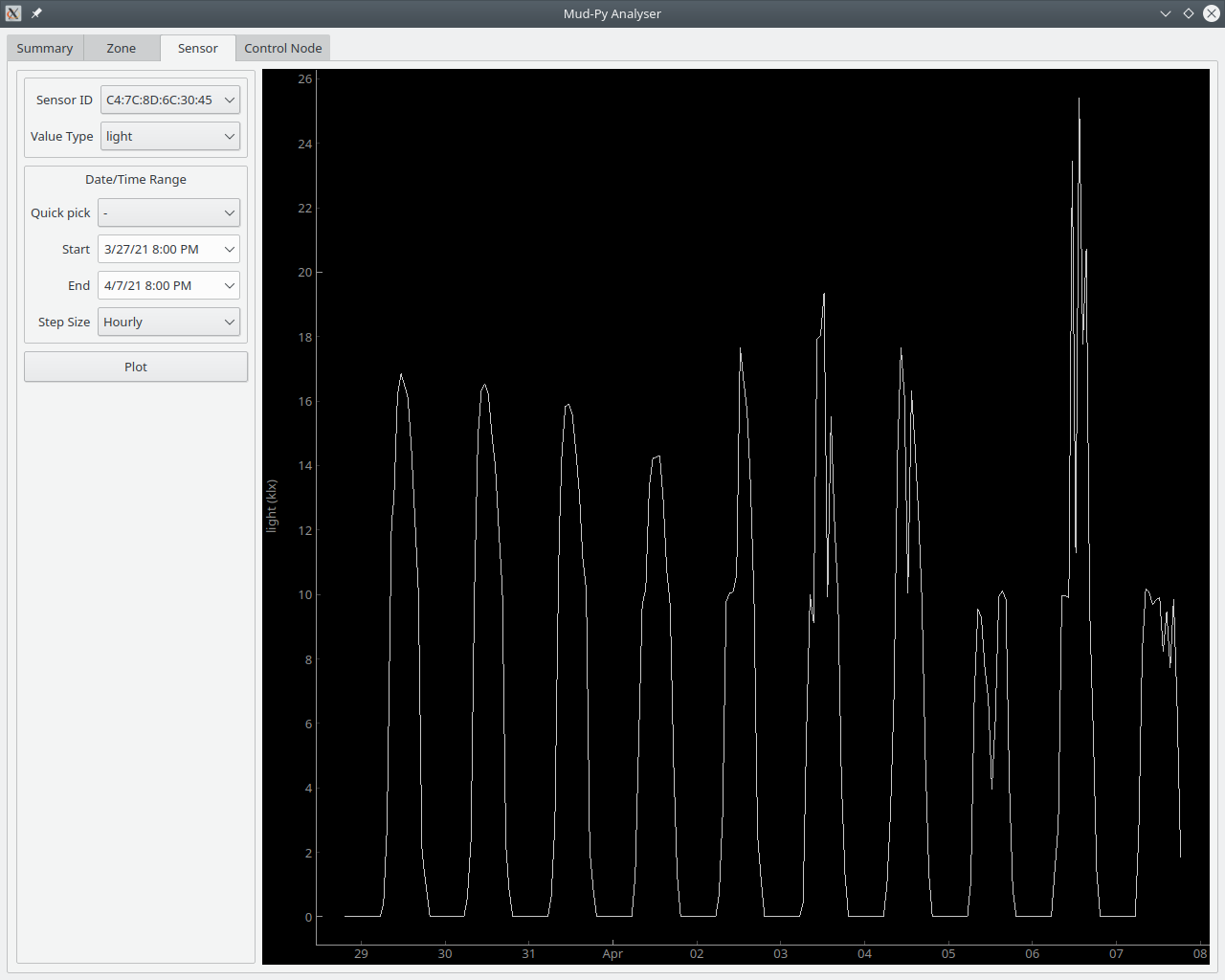 Brightest during the daytime (duh) and zero at night. The street light isn't bright enough to register at night.
Brightest during the daytime (duh) and zero at night. The street light isn't bright enough to register at night.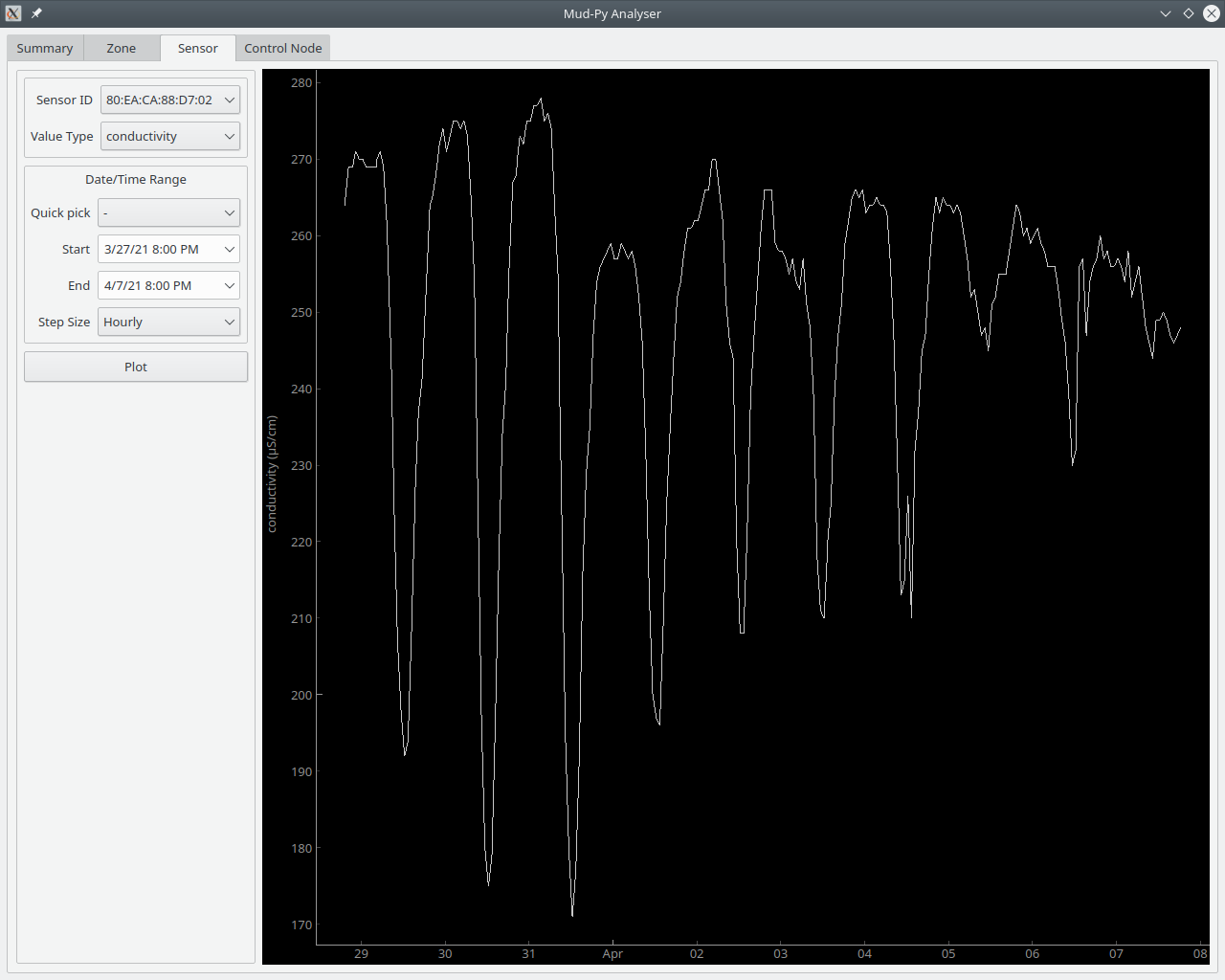 Conductivity also varies with the soil moisture. The nutrients have to be dissolved in water to conduct electricity. When the soil dries out, the conductivity drops. You can see how it varies over the course of the day just like the moisture varies.
Conductivity also varies with the soil moisture. The nutrients have to be dissolved in water to conduct electricity. When the soil dries out, the conductivity drops. You can see how it varies over the course of the day just like the moisture varies.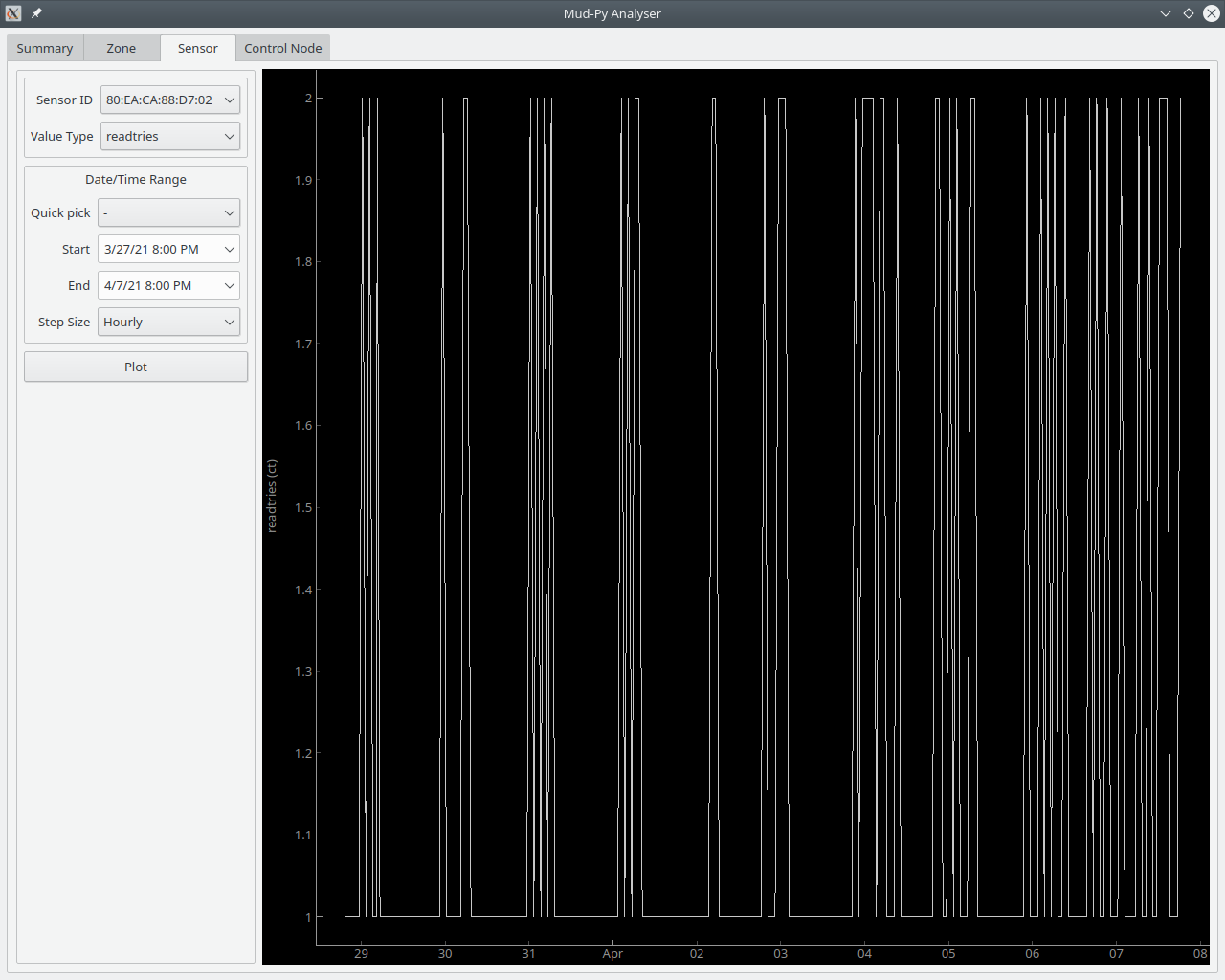 The closely spaced lines over to the right correspond with the battery capacity dropping below 30 percent, and they correspond to the temperature staying below 10C.
The closely spaced lines over to the right correspond with the battery capacity dropping below 30 percent, and they correspond to the temperature staying below 10C.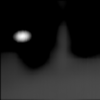

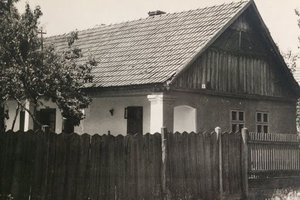
 marcell marosvolgyi
marcell marosvolgyi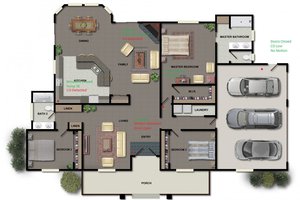
 staticdet5
staticdet5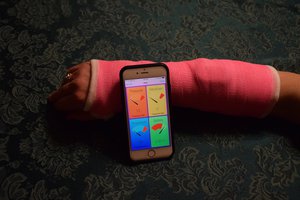
 Alex
Alex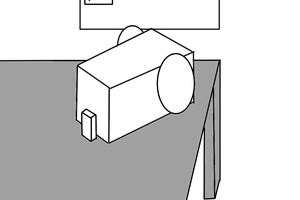
 minifig404
minifig404
Do yourself the favor and check out capacitive soil moisture sensors. There is a clone of the official chirp from catnip electronics for a lot less on aliexpress. I didn't feel guilty since I already bought a whole bunch of sensors from them. I used a special coating for the sensor but it should be possible to use nail polish. The xiaomi things just seem to use a galvanic measurement so you can't use fertilizer and those electrodes will rot away. I tried it back then with dirt cheap sensors and two steel nails as electrodes.
The good thing about their sensor is that you can go into deep sleep with it.